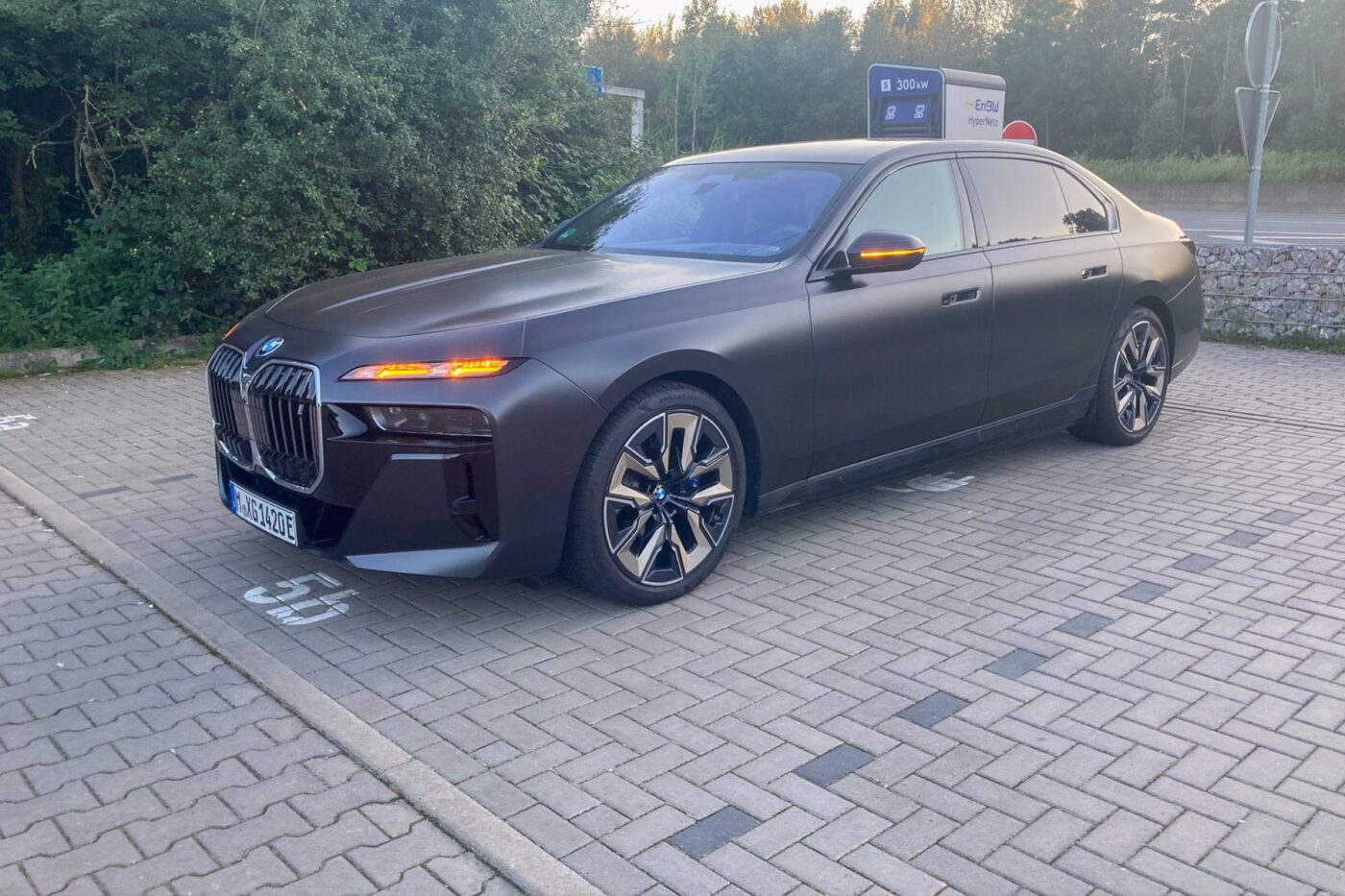
BMW’s new flagship i7 xDrive60 impresses with comfort and luxury
The fact that BMW polarises with the design of the seven-series has almost become a habit. Since the last, “well-behaved” seven-series E38 from 1994, the luxury sedan from Munich has divided opinions with every model change. But it is precisely with the change from an elegantly restrained design to an extroverted appearance that the seven-series has won new customers for BMW, especially abroad.
From this perspective, the current G70 series is likely to hit the mark. The long, powerful front is characterised by an oversized radiator grille and narrow headlight slits. Discreet is different. The crowning glory of the visual appearance: for an extra charge, the outline of the already not exactly inconspicuous BMW kidney grille is illuminated in the dark to further emphasise it. From the side, the current seven-series generation – especially if customers opt for the optional two-colour paint finish – almost has the look of a Rolls-Royce.
Our test car, an i7 xDrive60 with 400 kW all-wheel drive, does not have the extravagant two-tone paint finish, but it does have another, no less polarising option: a dark matt paint finish. Although the sedan looks somewhat like a stealth vehicle, even the matt paint cannot conceal the dimensions of a seven-seater. At 5.39 metres, the i7 is one of the longest test cars, excluding commercial vehicles or electric vans, of course. However, the steep, massive front does not exactly help to make the car appear smaller. The 1.95-metre width without wing mirrors is notable on the i7. Which is probably exactly what is wanted.
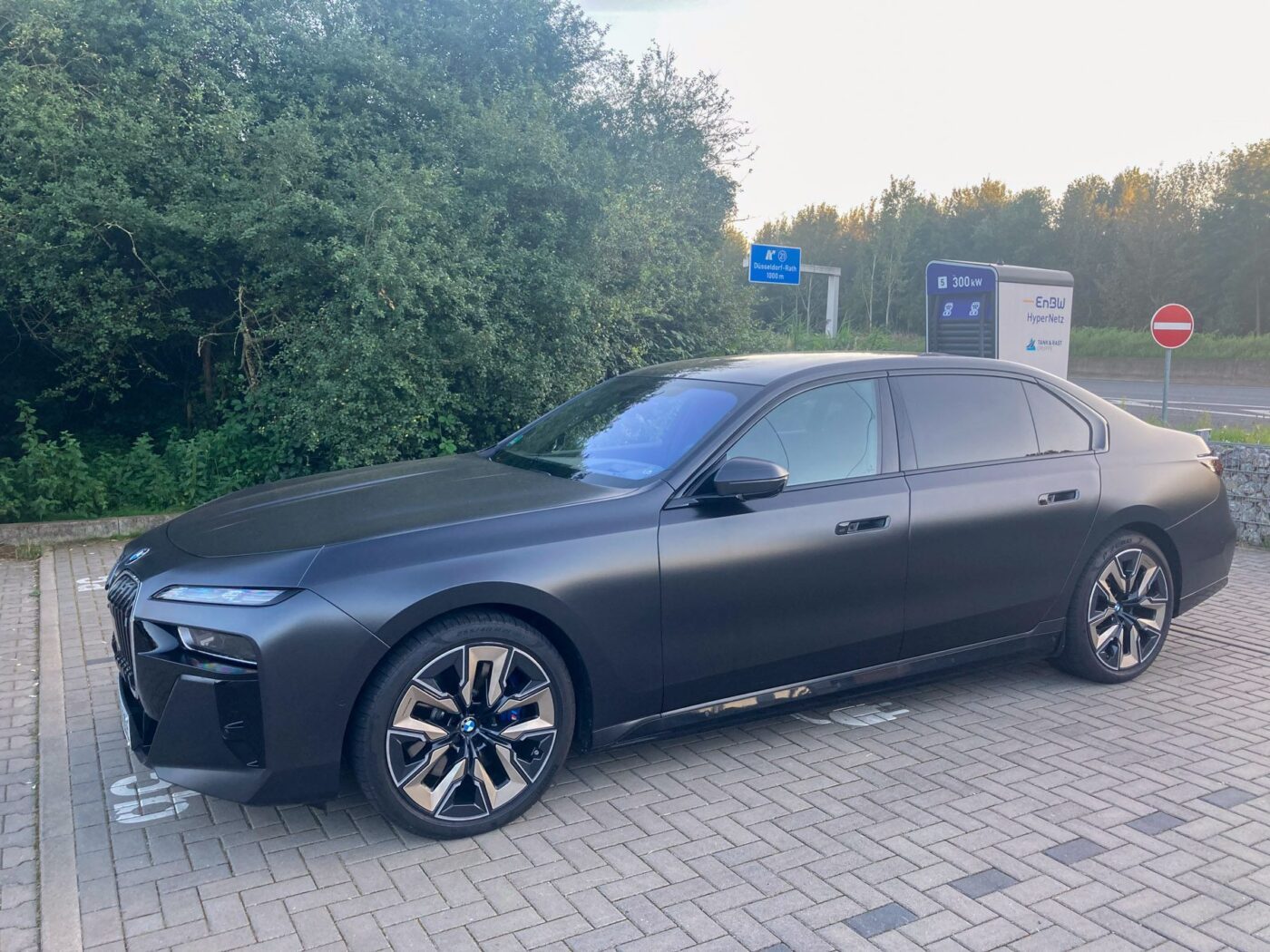
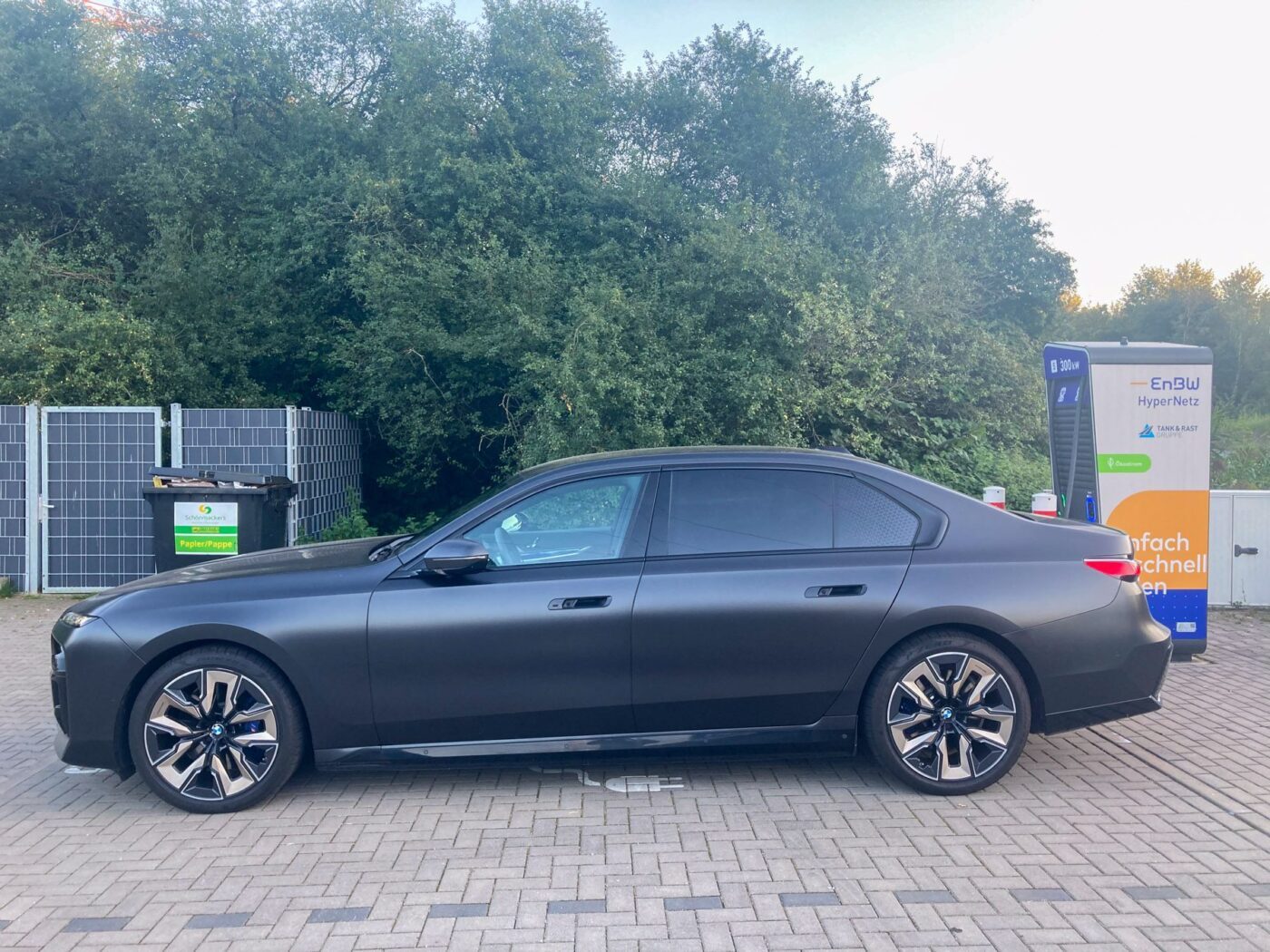
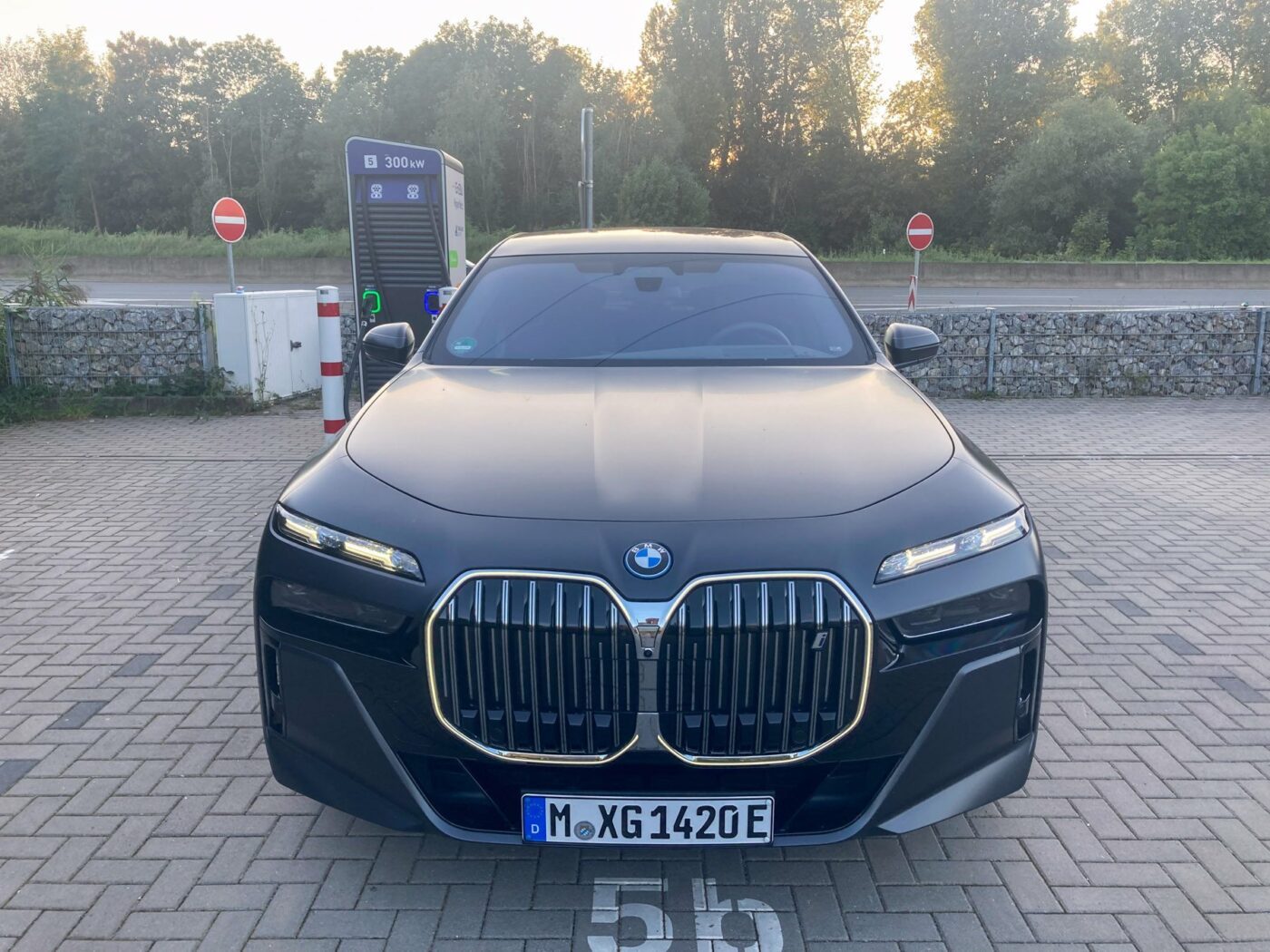
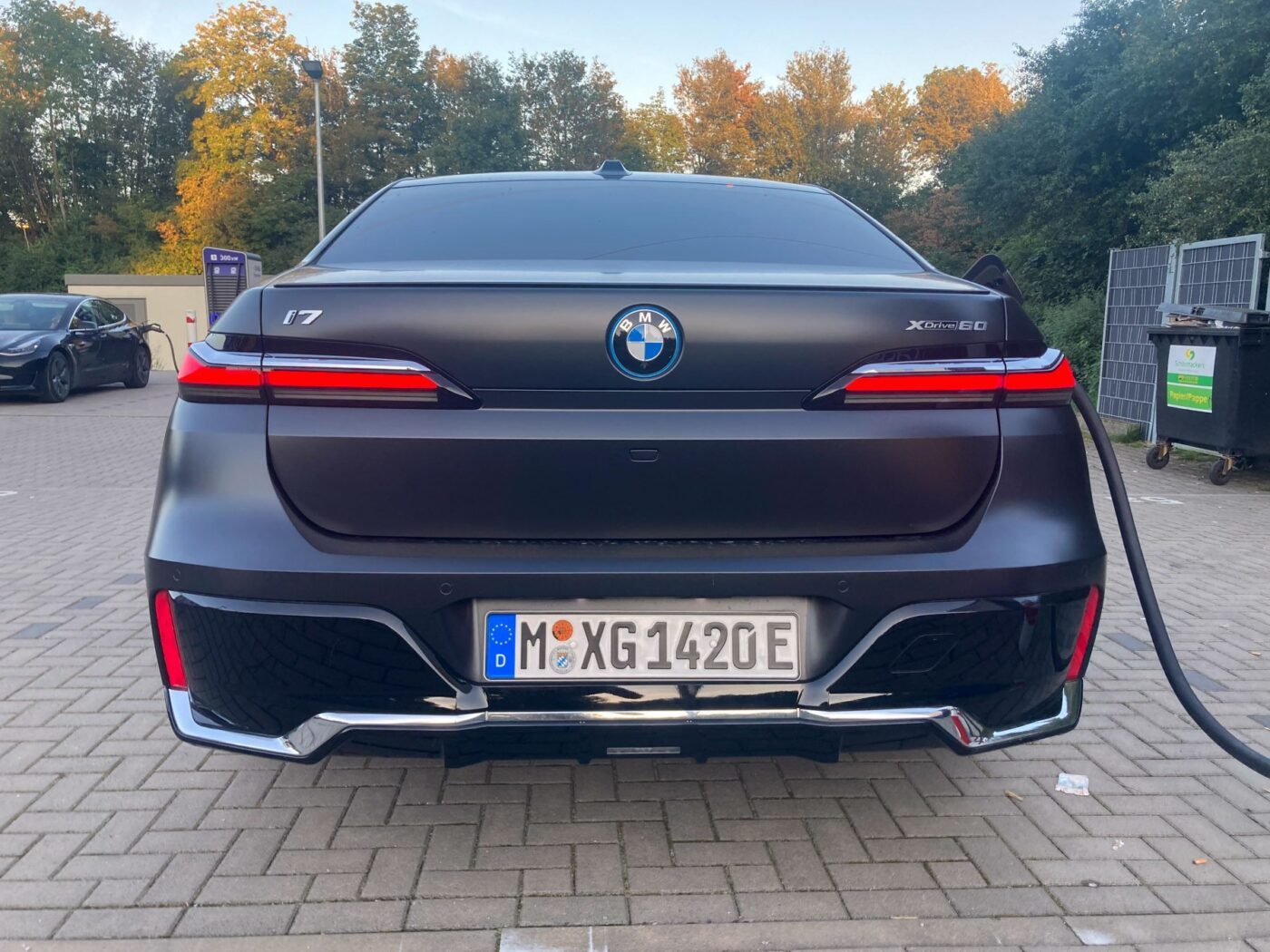
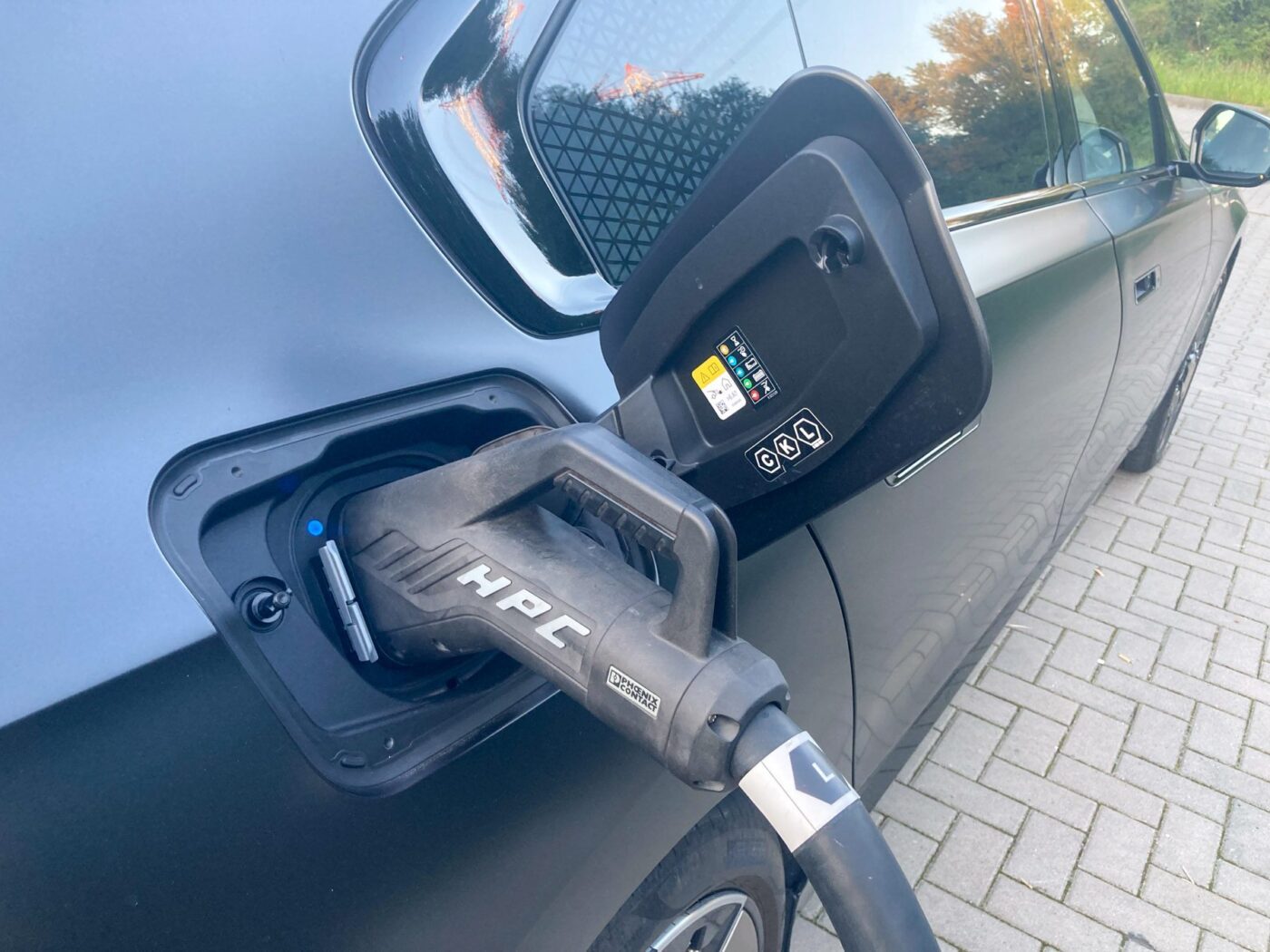
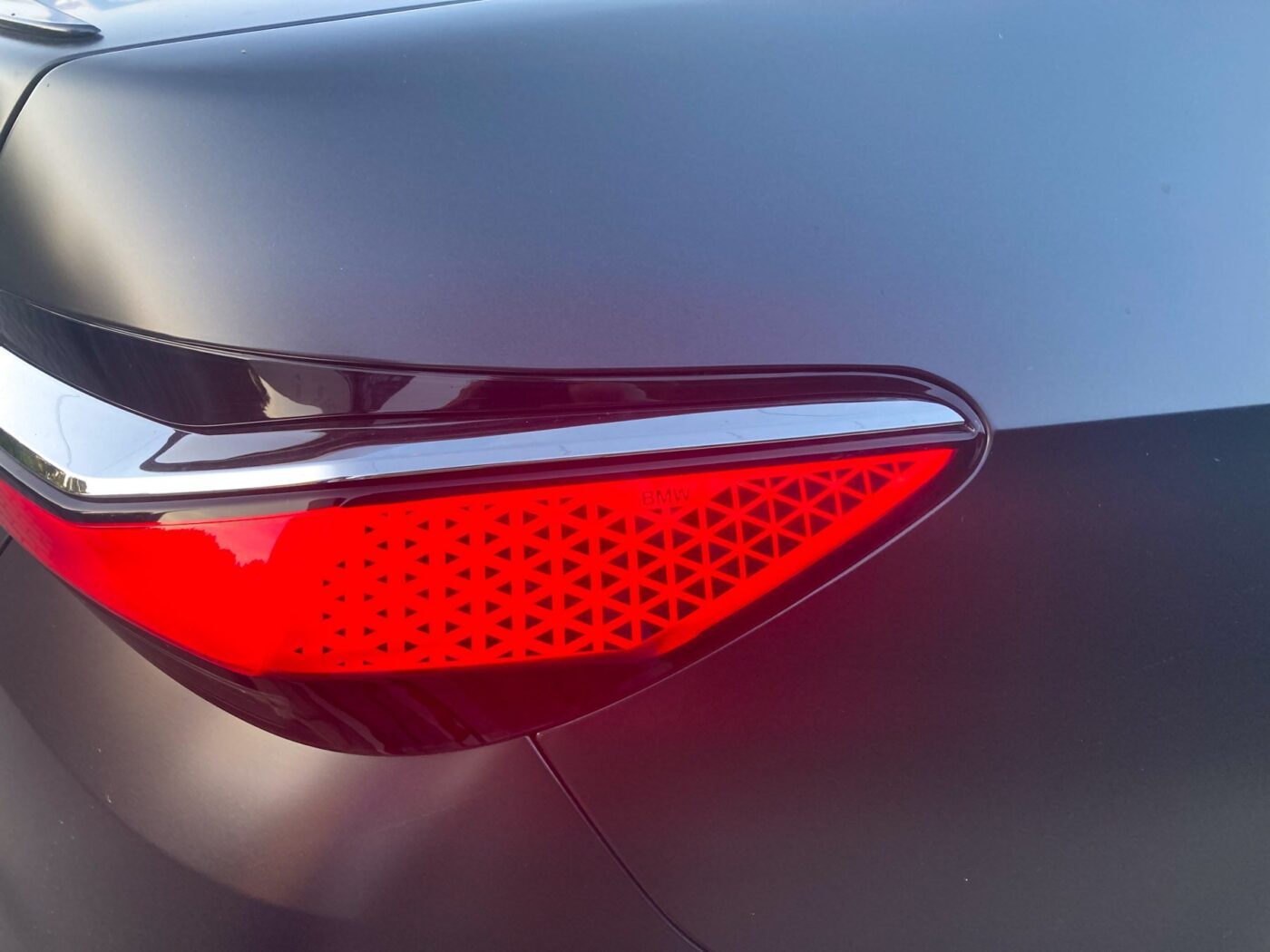
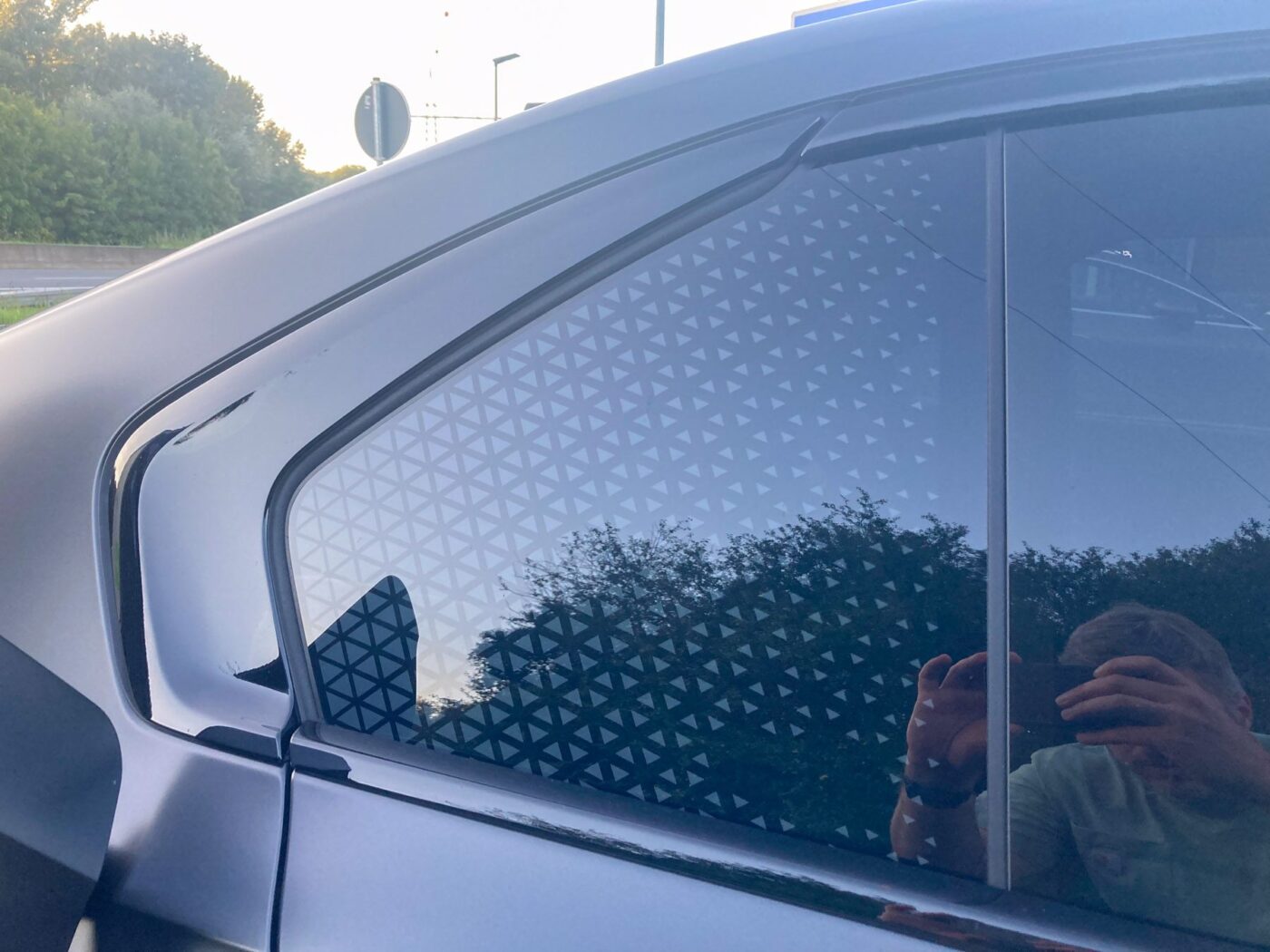
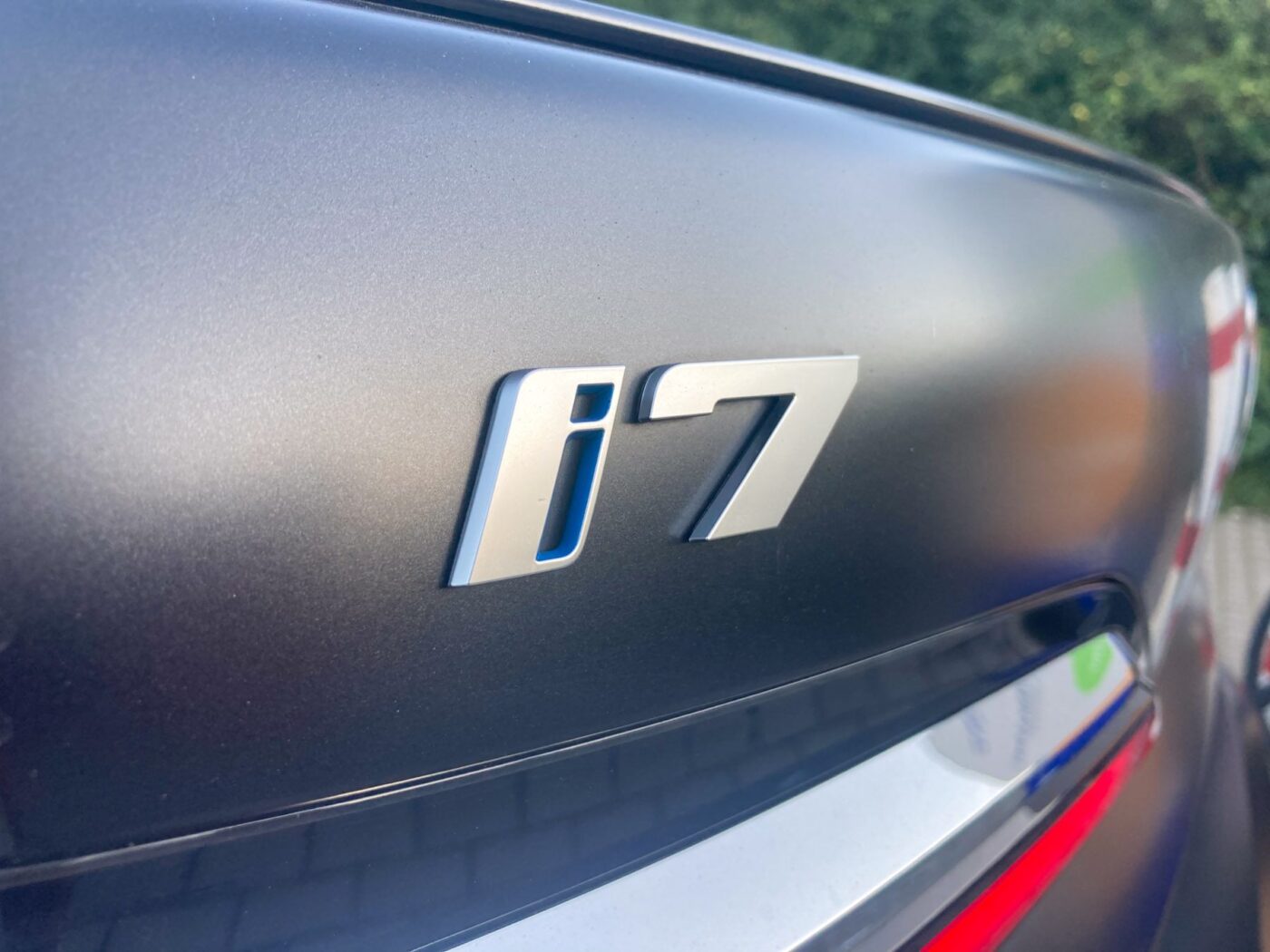
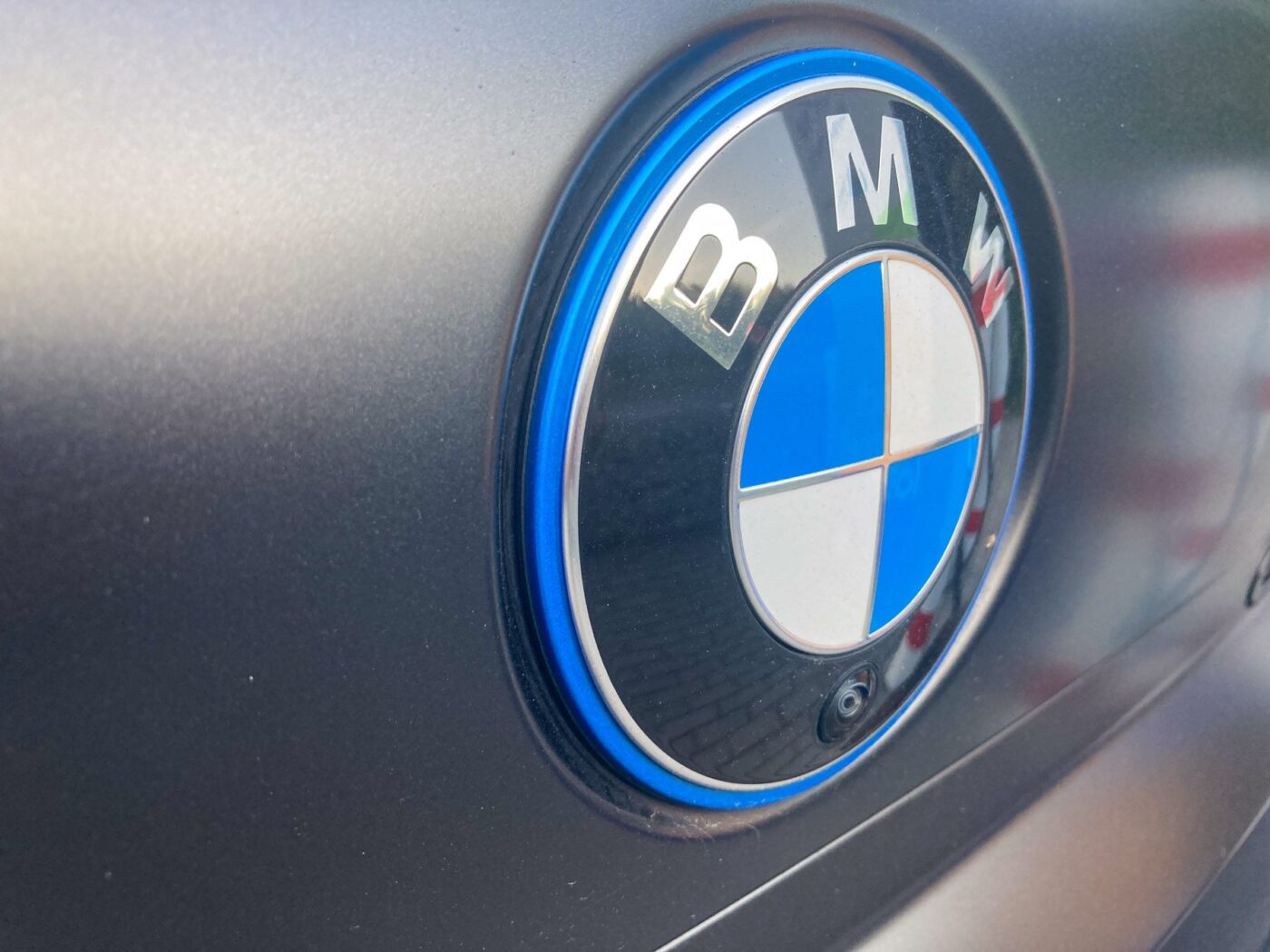
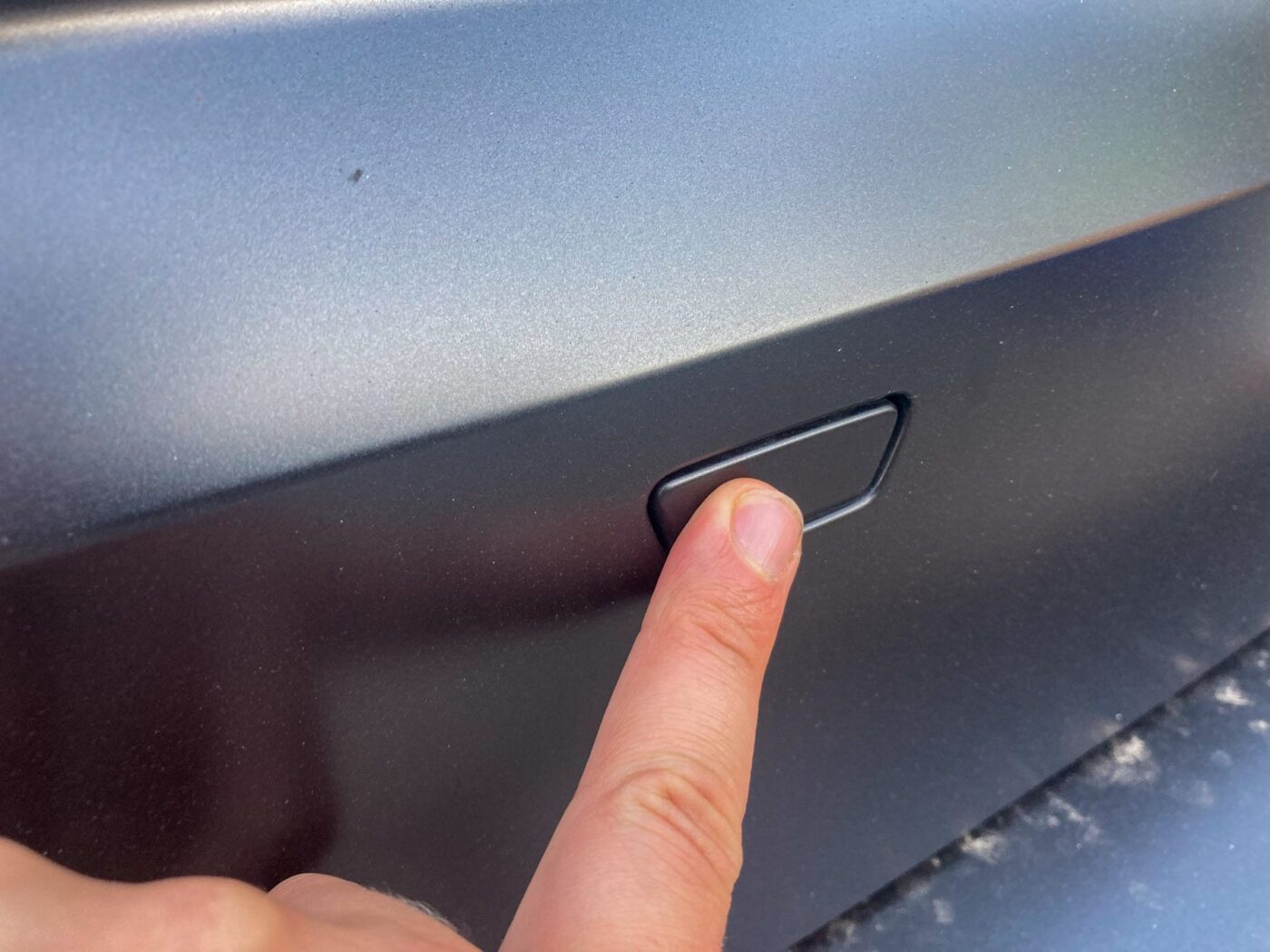
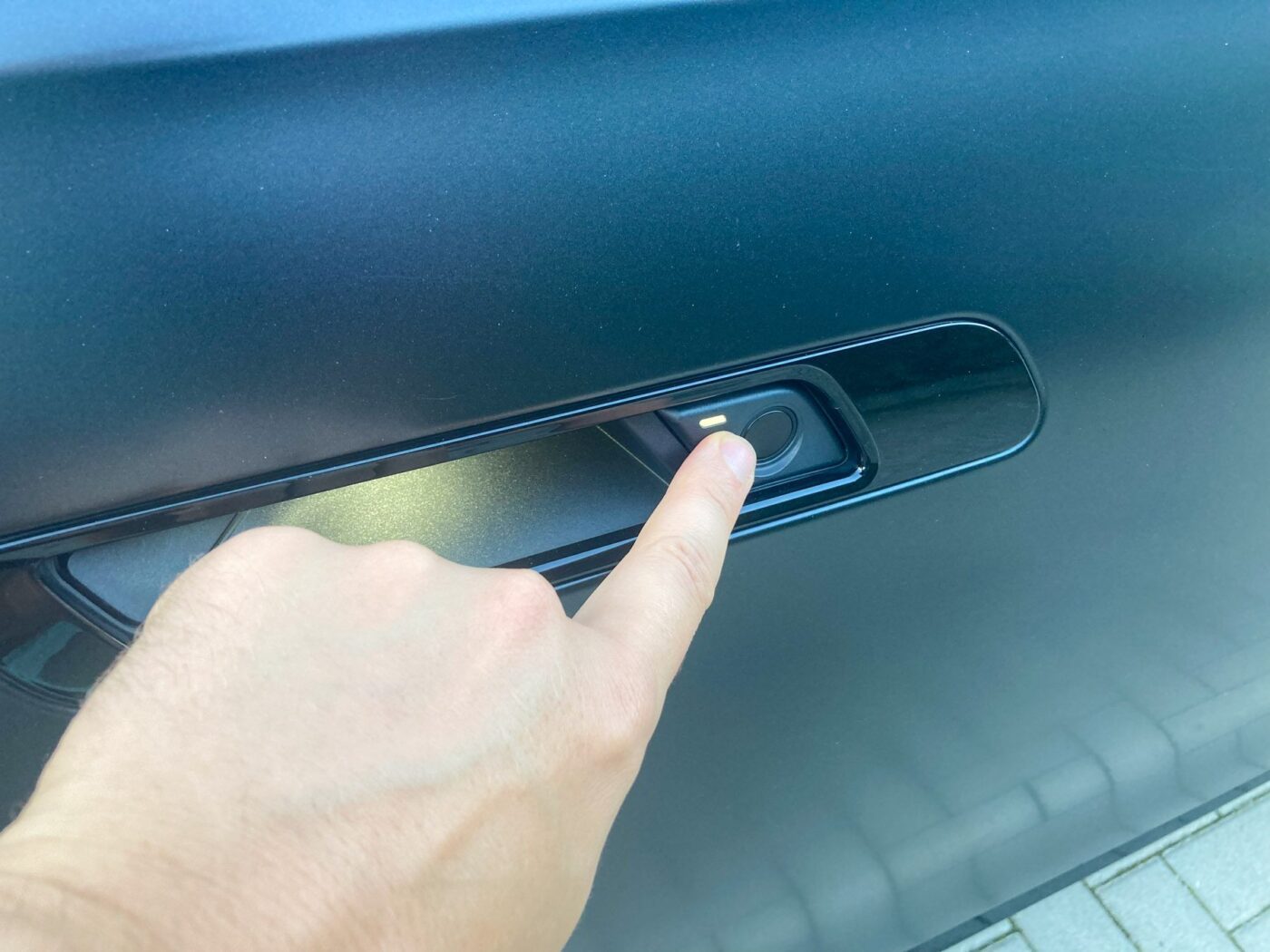
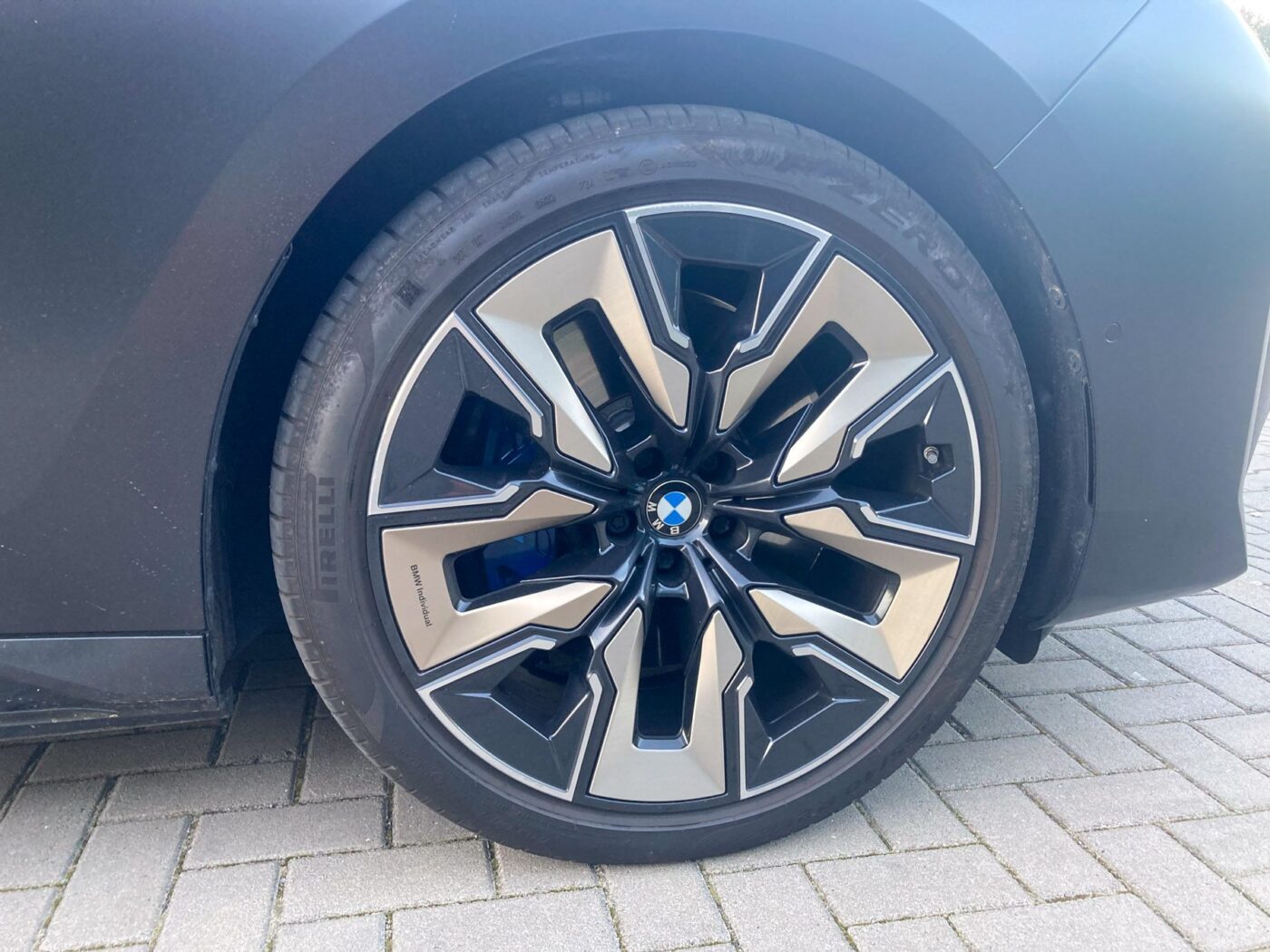
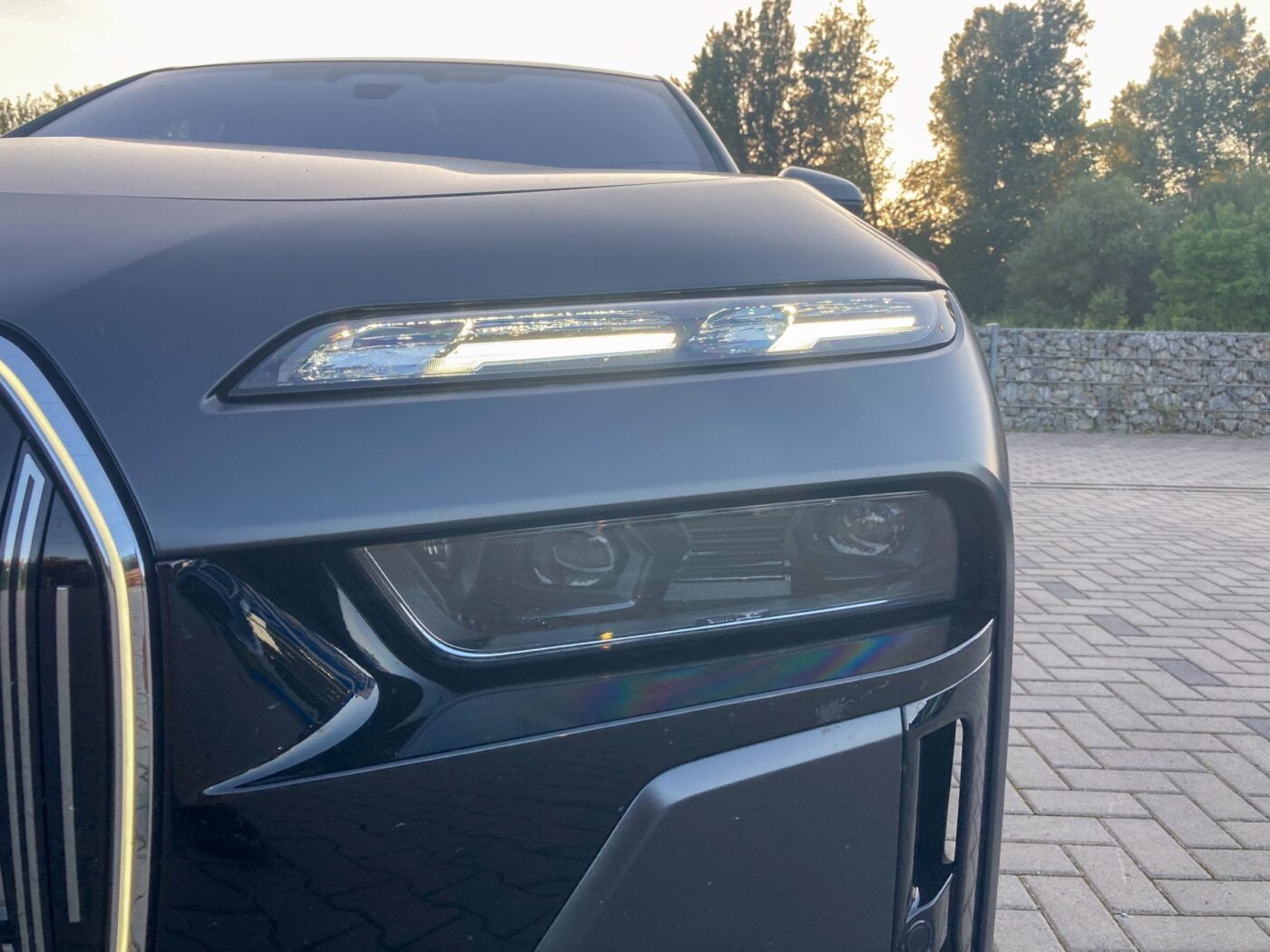
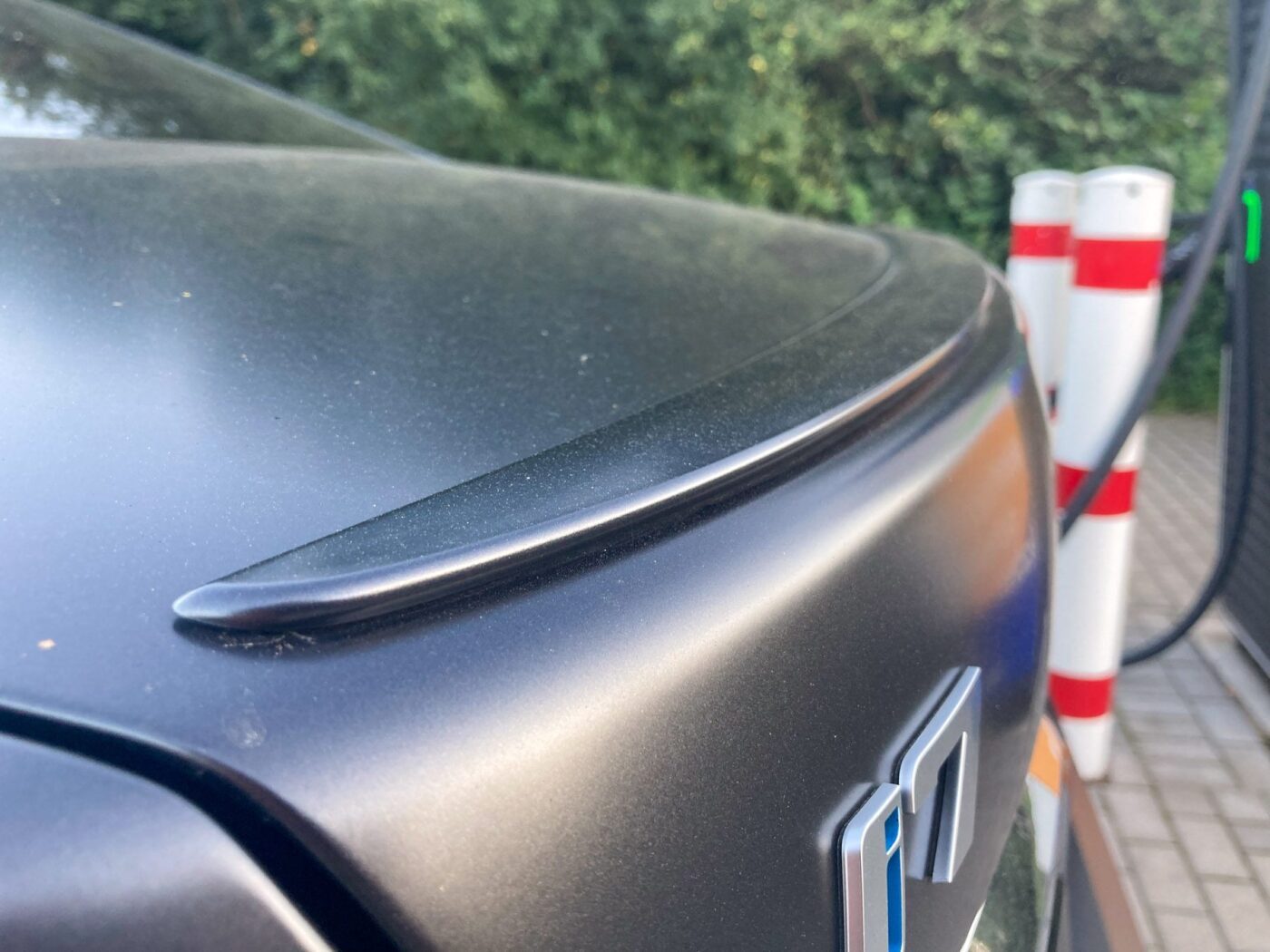
In addition to the outward appearance, the inner values of a luxury sedan always count. In other words, the drive must be convincing (on the road and preferably also in the car quartet), the comfort must be right and the increasingly digital features must also fit. So let’s leave the already subjective design aside and focus on these three categories – and at electrive, we’ll naturally start with the electric drive.
400 kW, 101.7 kWh and 624 kilometres WLTP range
In this segment, it is clear that the i7 will not be a no-frills model. The electric seven-seater is based on BMW’s current electric drive generation 5, which has already impressed with its performance, responsiveness and efficiency in other models. The i7 xDrive60 is equipped with a 190 kW motor on the front axle and a 230 kW unit on the rear axle – in both cases, these are externally excited synchronous motors that do not require rare earths. The system output is 400 kW and the maximum torque is 745 Nm. For the only stronger model, you have to go for the 485 kW i7 M70.
Two features were particularly impressive in the test. There is more than enough power available, as the datasheet already reveals. However, an i4 M50 also delivers 400 kW peak power in boost mode. What distinguishes the i7 from its theoretically equally powerful little brother is how the i7 handles this power. Although it responds sensitively to the driver’s commands, as is typical of BMW, it does so with a certain sophistication. It’s not about pressing the passengers in the rear as hard as possible into the seats or surprising them with the immediately available torque. With the i7, you can elegantly leave most other cars at the traffic lights, without the passengers nodding their heads with discomfort. At the same time, despite its 5.39-metre length and whopping 2.7 tonnes of kerb weight, it is not a sluggish tanker – but more on the chassis in a moment.
The second aspect of the drive system is efficiency, which is surprisingly good despite the weight, performance and aerodynamically less than ideal steep front end just mentioned. In our test average over 980 kilometres, the consumption was 21.8 kWh/100 km, which with a 101.7 kWh battery (net, 105.7 kWh are actually installed) leads to a calculated range of 466 kilometres. Since delivery almost 23,600 kilometres ago, the on-board computer shows a value of 26.4 kWh, although the consumption of a press test car is probably not exactly representative when every journalist tests the acceleration (4.7 seconds to 100 kph), the top speed (240 kph) or the driving behaviour in the various driving modes. With a relaxed driving style, consumption of less than 20 kWh/100 km was possible without any problems – albeit at higher temperatures last year. That’s not exactly low, but it’s certainly respectable in this class.
As with the EQS, the i7 also has one drawback: the battery, which has a capacity of over 100 kWh, operates at a voltage of 400 volts. This limits the charging capacity to 200 kW, which leads to correspondingly long charging times with this battery size. Yes, an 800-volt system is not an end in itself, even for fast charging; a constant 400-volt charging curve is not necessarily worse in practice than an 800-volt system with a higher peak, but which then has to reduce the output earlier.
In the i7, however, the output of just under (or even slightly over) 200 kW is only available up to a charge level of around 40 per cent. From then on, the large battery in the BMW also has to reduce its power somewhat, albeit quite gently: the 100 kW charging power is only undercut at around 75 per cent SoC (State of Charge), at 80 per cent there is still around 90 kW, and at 90 per cent charging was still at 87 kW. However, the standard charging process from ten to 80 per cent still took 34 minutes in our test. Of course, a 34-minute break after driving almost 400 kilometres is no problem on long journeys. But in everyday life, a quick charge on a 400-volt car with such large batteries always means a charging process of at least half an hour. And anyone who has just spent at least 139,900 euros on their BMW i7 will certainly not be impressed if a Hyundai Ioniq 6, which has also easily driven 400 kilometres beforehand, continues driving after just 18 minutes at the fast charger – while you have to charge for another 16 minutes.
Two comments on fast charging: The i7 no longer has the “one charging curve,” which indicates the maximum charging power at a certain charge level. If the charging process is started at around ten per cent and you have already been charging at 200 kW for a while, thus heating up the battery, 150 kW will still flow at a charge level of 55 per cent. However, if you only start the charging process at 55 per cent, higher charging capacities than the 150 kW of the “optimum” charging curve from ten to 80 per cent are possible at this charge level.
The route planning with charging stops also works extremely well in the i7: the suggested stops are sensible and the system also plans a charging stop with only a six per cent charge level on arrival. Other manufacturers are much more conservative in their calculations, but leave a good part of the battery and the (theoretical) range unused. In the i7, it is also very easy to set the charge level at which you want to arrive at your destination – the charging stops are then planned accordingly. If desired, the preconditioning of the battery (which is done automatically for a planned route) can also be started manually – for example, if you are navigating with Google Maps instead of the BMW system.
Travelling in the i7 is excellent
Whether on the daily commute, a business trip or a vacation: the i7 is extremely comfortable. The chassis, the seats, the noise insulation – everything contributes to an extremely comfortable driving experience. The Mercedes EQS 580 4MATIC with air suspension, which is comparable to our test car, was by no means uncomfortable! With a gap of almost a year between the two test cars, absolute comparisons are of course no longer possible. However, the BMW feels a little ahead in almost every area. Rolling is smoother, wind noise on the highway is barely audible and bumps are absorbed with ease.
The BMW slogan “The joy of driving” therefore also applies here. A 2.7-tonne sedan is certainly no sports car, but it is a different, sublime driving experience. And in Sport mode, the i7 is also more agile than the datasheet entries on weight and dimensions would suggest. In combination with the refined drive, you can imagine how many hours of development and tuning work have gone into these systems, from the concept phase to the final test drives, to achieve this overall experience.
Light and shade in other features
However, it now takes much more than a powerful drive, a good chassis and comfortable seats to impress as a luxury saloon. Digital functions and other luxury features are also extremely important, particularly for the Chinese customers that the current generation of the seven-series is increasingly aimed at.
I was therefore surprised in the test that the i7 does not make a fully thought-out impression even with some of the basics. One example would be ambient lighting, which is an eye-catcher with its broad colour spectrum and fine animations. However, the light strip is installed under a glass surface with countless angled triangles. It may look stylish, but one of these triangles is always reflective. If you are dazzled by your own car when changing lanes on the highway in low sun just because you want to look in the wing mirror, it almost looks as if the i7 has not been road-tested.
And if the ambient lighting isn’t reflective, then perhaps the iDrive controller, which is also made of polished glass, the piano lacquer surface surrounding it or the visible carbon element in the dashboard installed in our test car, which is also covered with a kind of protective (and reflective) clear lacquer.
At least BMW has dispensed with the seat adjustment controls in the front doors made of polished glass, as offered in the iX, for example, in the seven-series. One of the killer features with which BMW wants to set itself apart from the competition is the theatre screen in the rear. Anyone who books the ‘Rear Seat Entertainment Experience Package’ can fold out a 31.3-inch monitor from the roof liner and watch movies or series as a passenger during the journey or as a driver during a loading break in what is probably an incomparable experience. It is without question an enormous wow effect when the monitor folds out at the touch of a button and the blinds on the rear side windows and the rear window close at the same time. Yes, the 8K resolution of the monitor is brilliant, and the sound experience with the “shakers” integrated into the seat backs for the bass is extremely close to the movie theatre effect. Netflix, YouTube & Co. are operated either by touch or (to avoid fingerprints on the theatre screen) via small touch displays in the rear doors. A little awkward, but certainly a matter of habit. But what I couldn’t get used to: No matter how I tilted or adjusted the display or how I slid back and forth in the seat, the theatre screen was too close for me, and rather uncomfortable for the eyes in the long run. It was also noticeable that virtually no movie or series could really take advantage of the 32:9 format of the Theatre Screen. As a result, parts of the expensive screen remain unused on the right and left – or the picture zooms in so far that content is cut off at the top and bottom. After two weeks of testing, I’m not completely convinced by the theatre screen. It seems more like a novelty feature that’s cool because it’s new. And not necessarily because it offers enormous added value and the system is popular and regularly used.
However, the aforementioned “shakers” are not just a feature of Rear Seat Entertainment, but are also installed in the front seats. Once you’ve experienced them, music from other high-quality audio systems doesn’t feel complete. The targeted transmission of low tones to the seat (the intensity of which can be adjusted in the menu) lets you experience the music as if you were at a live concert – not only because of the “shakers” in the seat, of course, but also because of the rest of the Bowers & Wilkins sound system. And all this while you’re cruising along the highway at a relaxed 130.
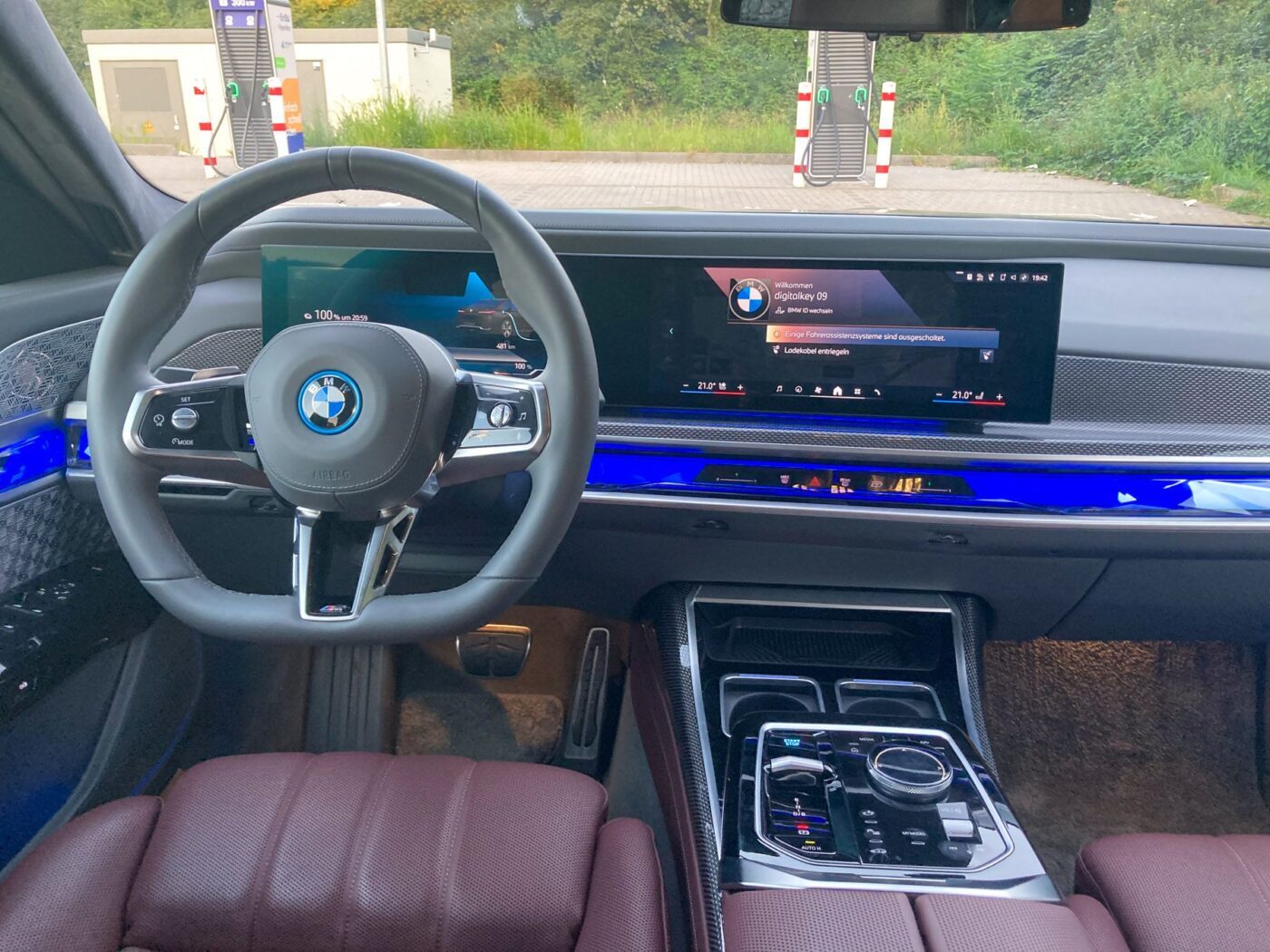
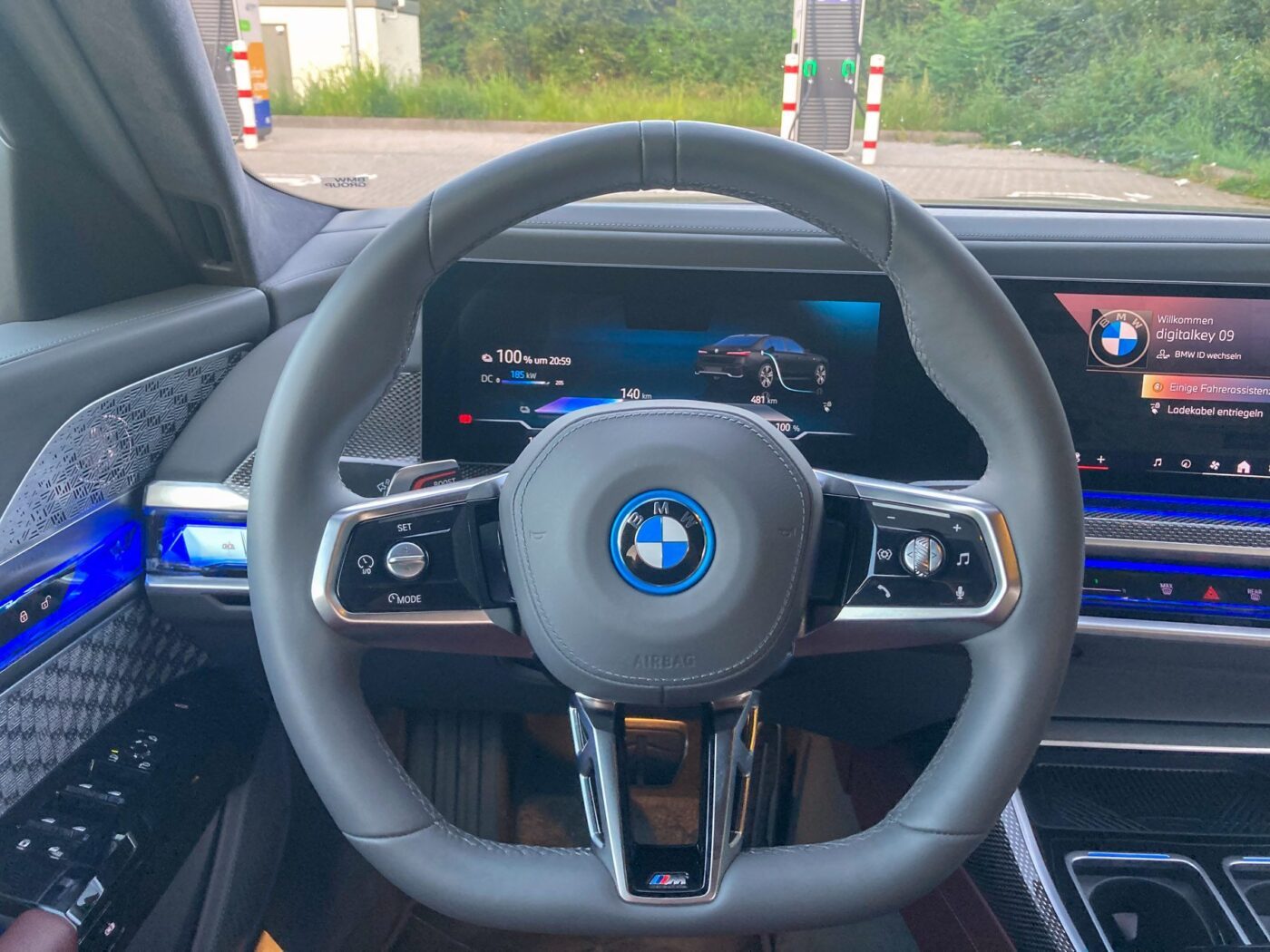
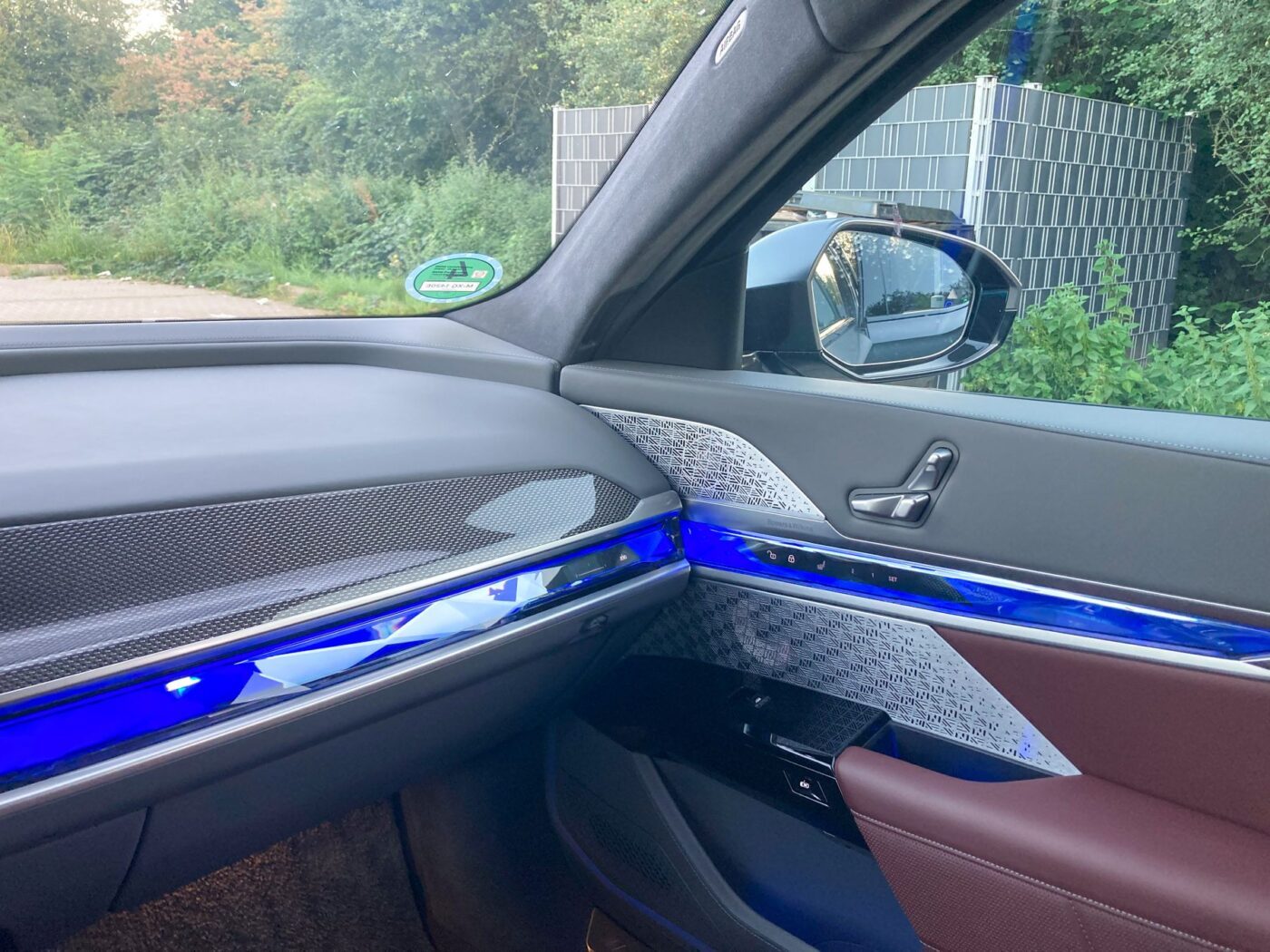
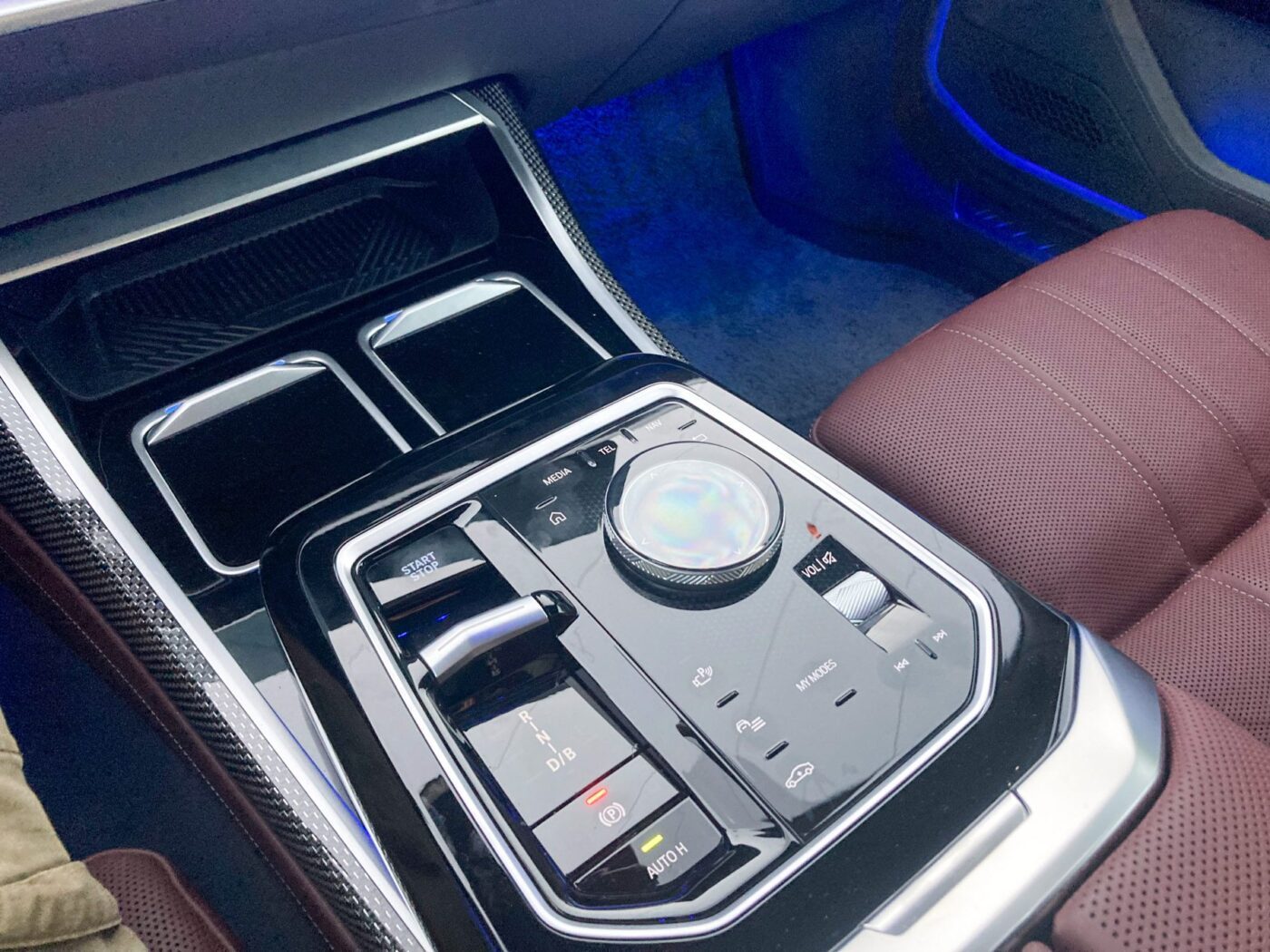
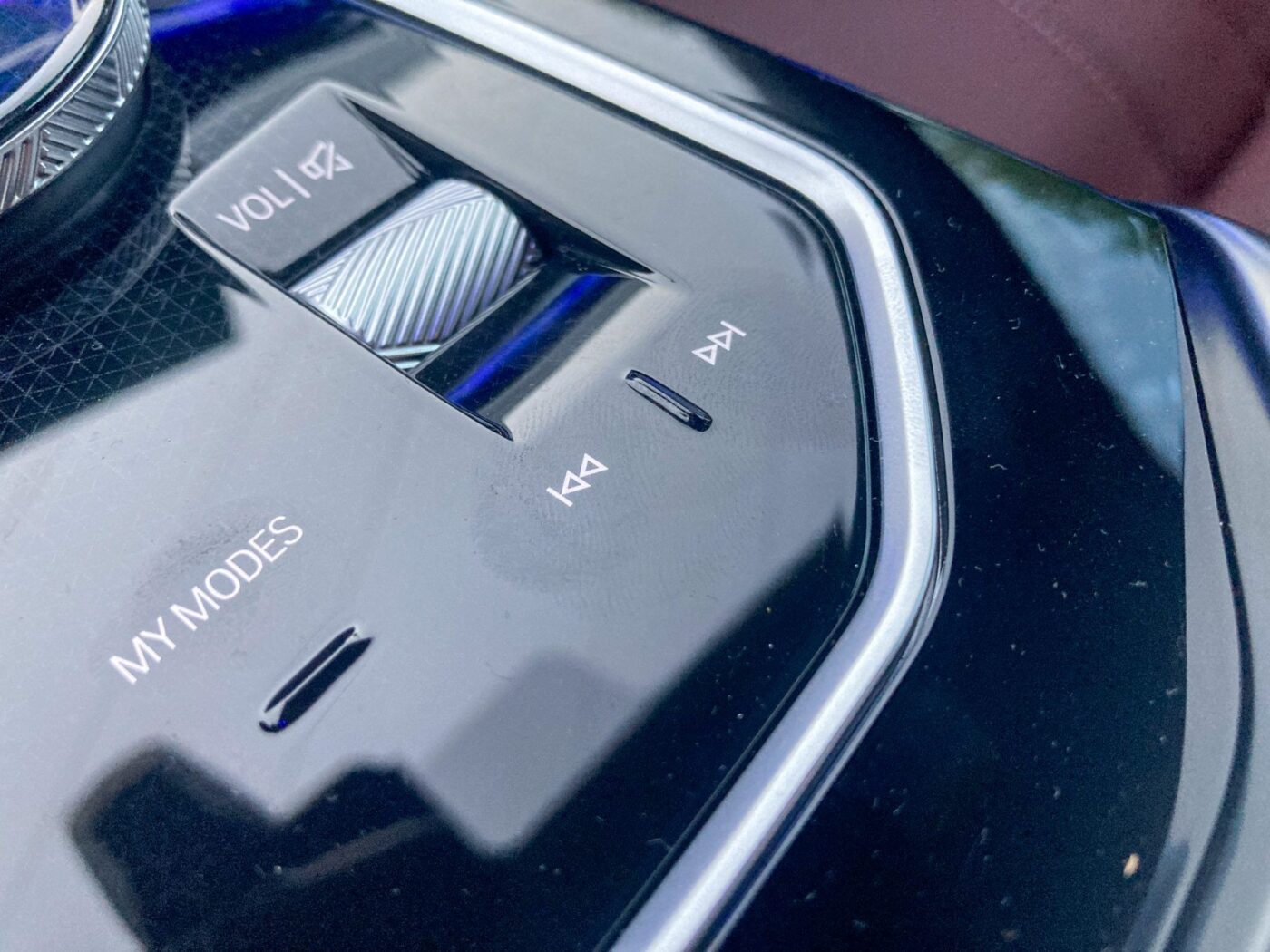
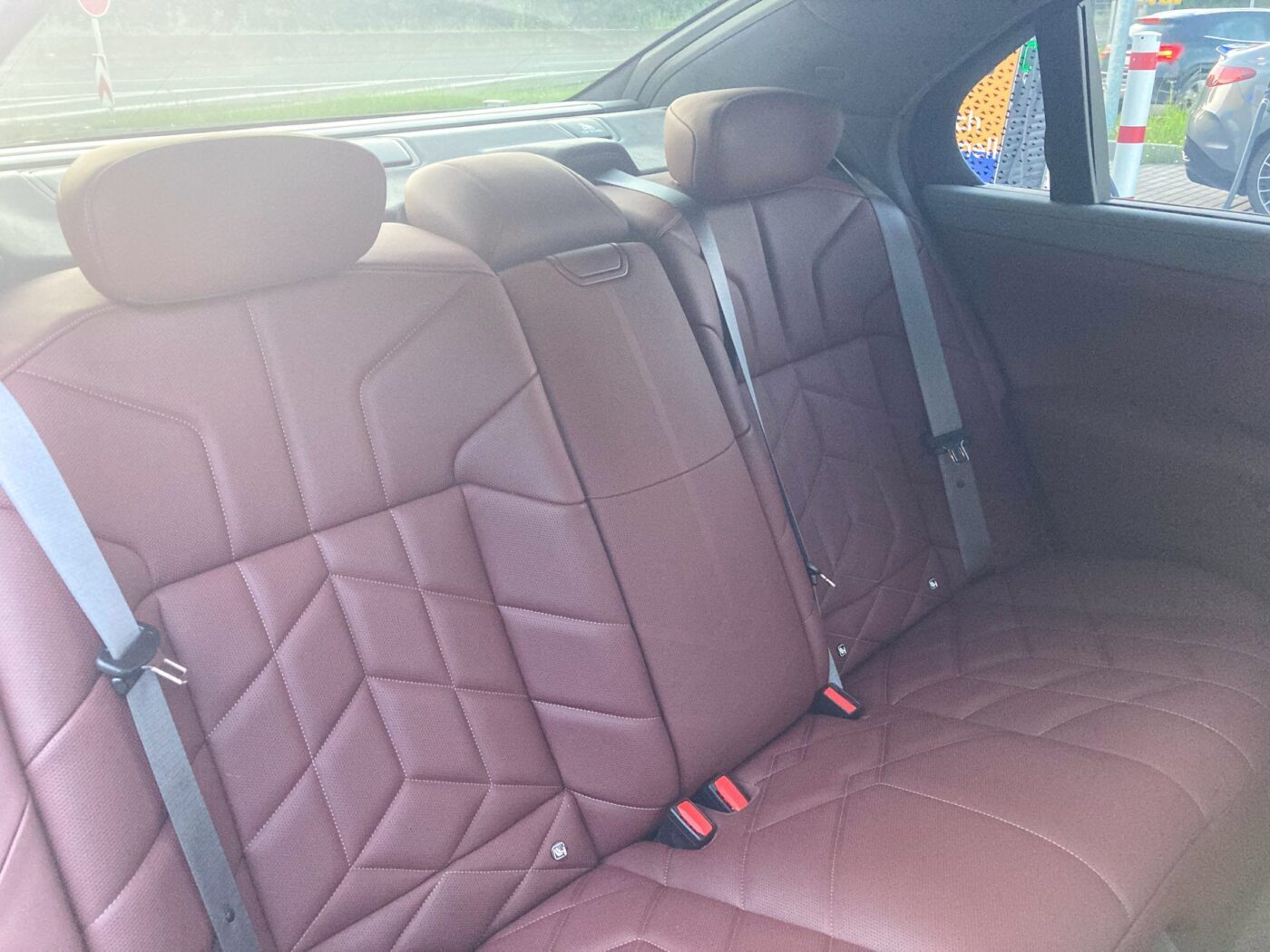
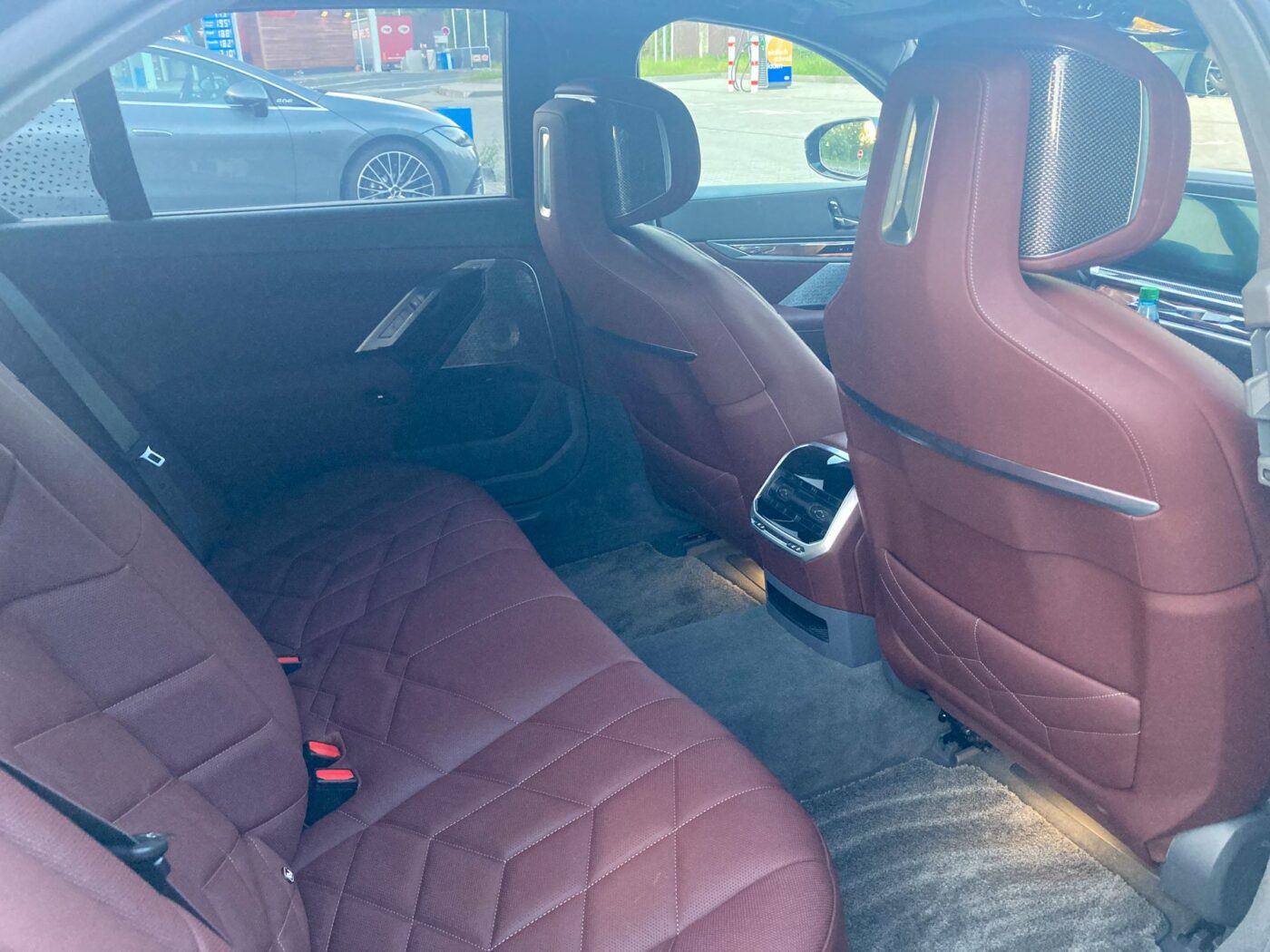
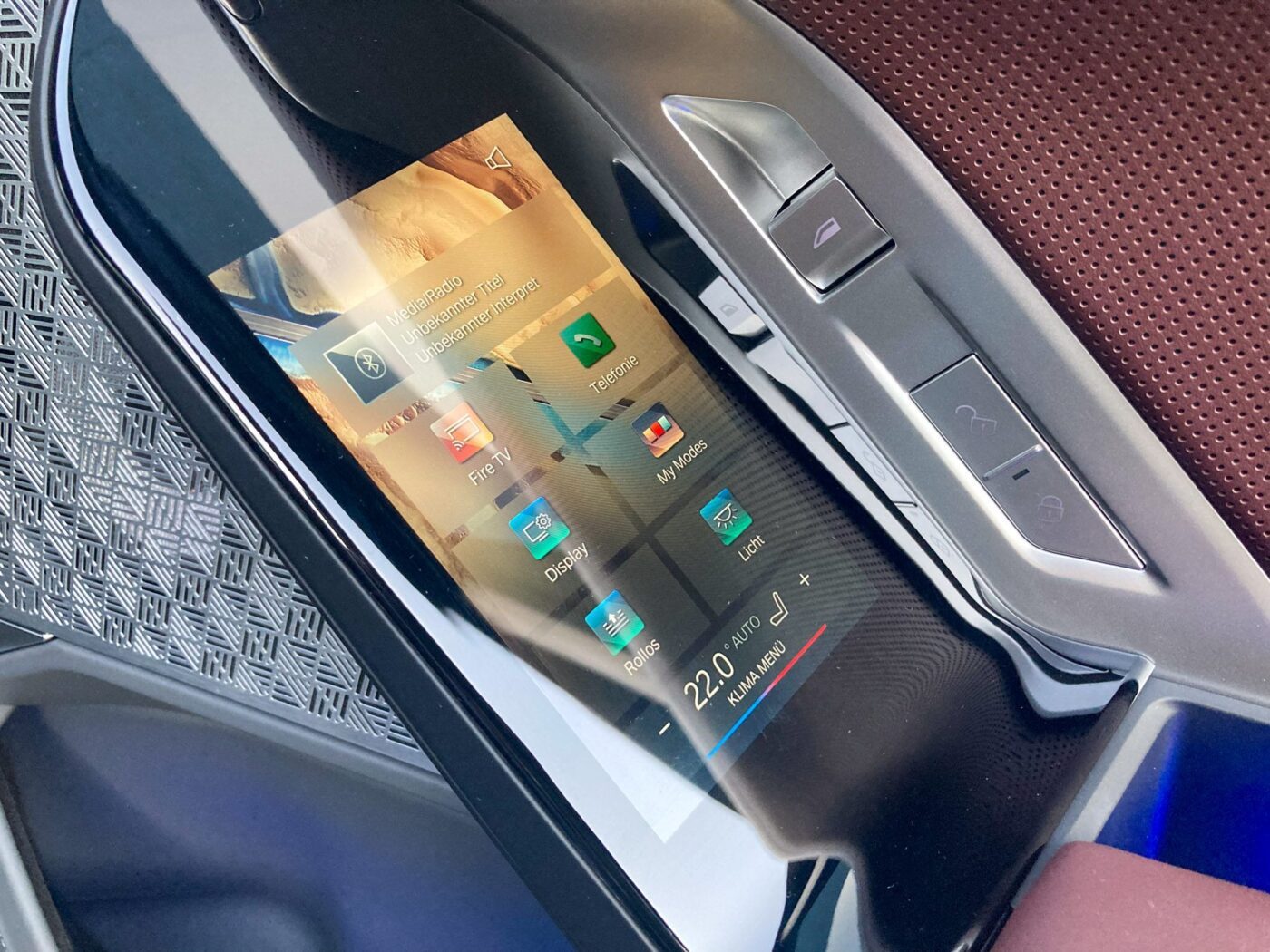
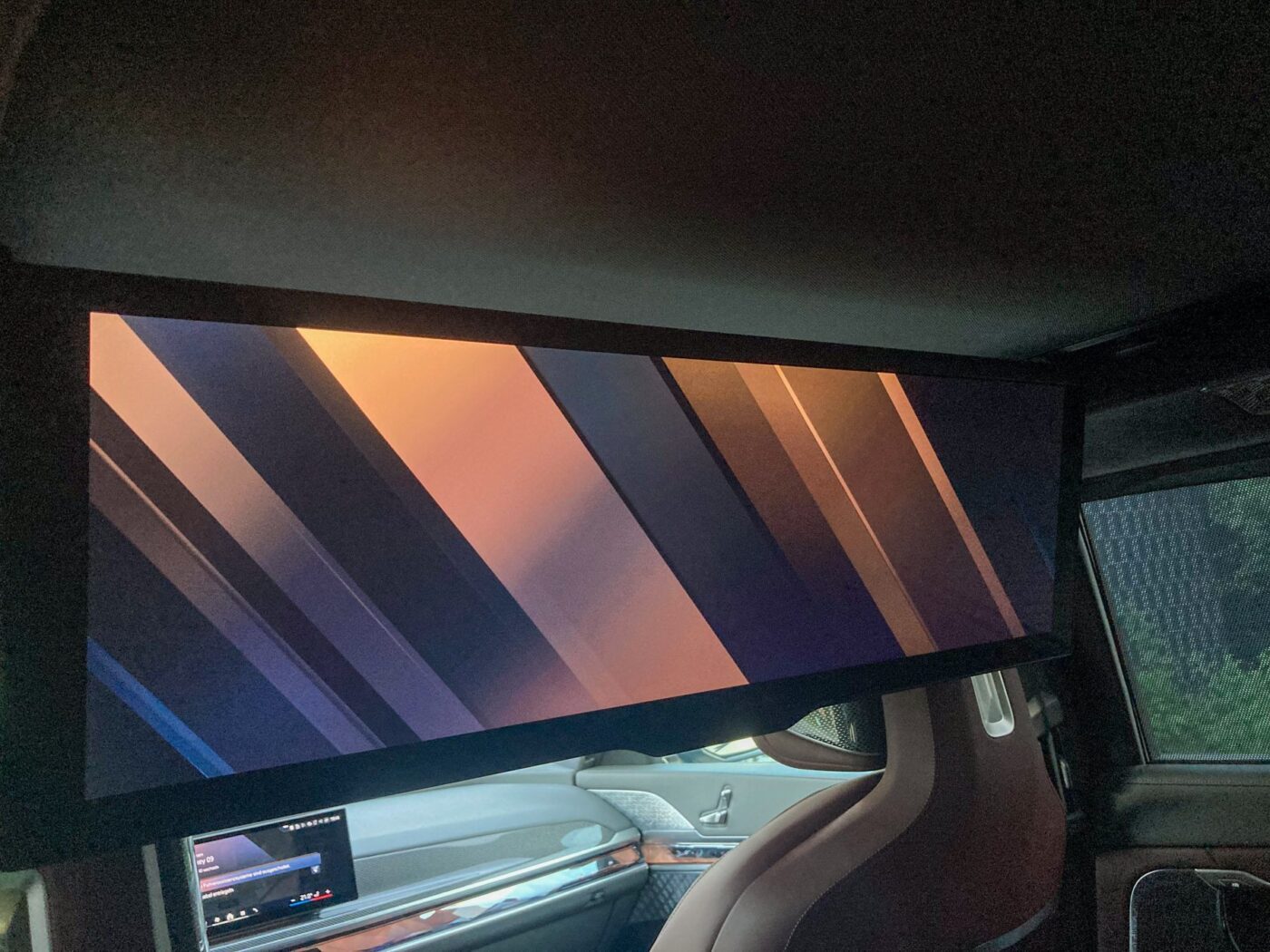
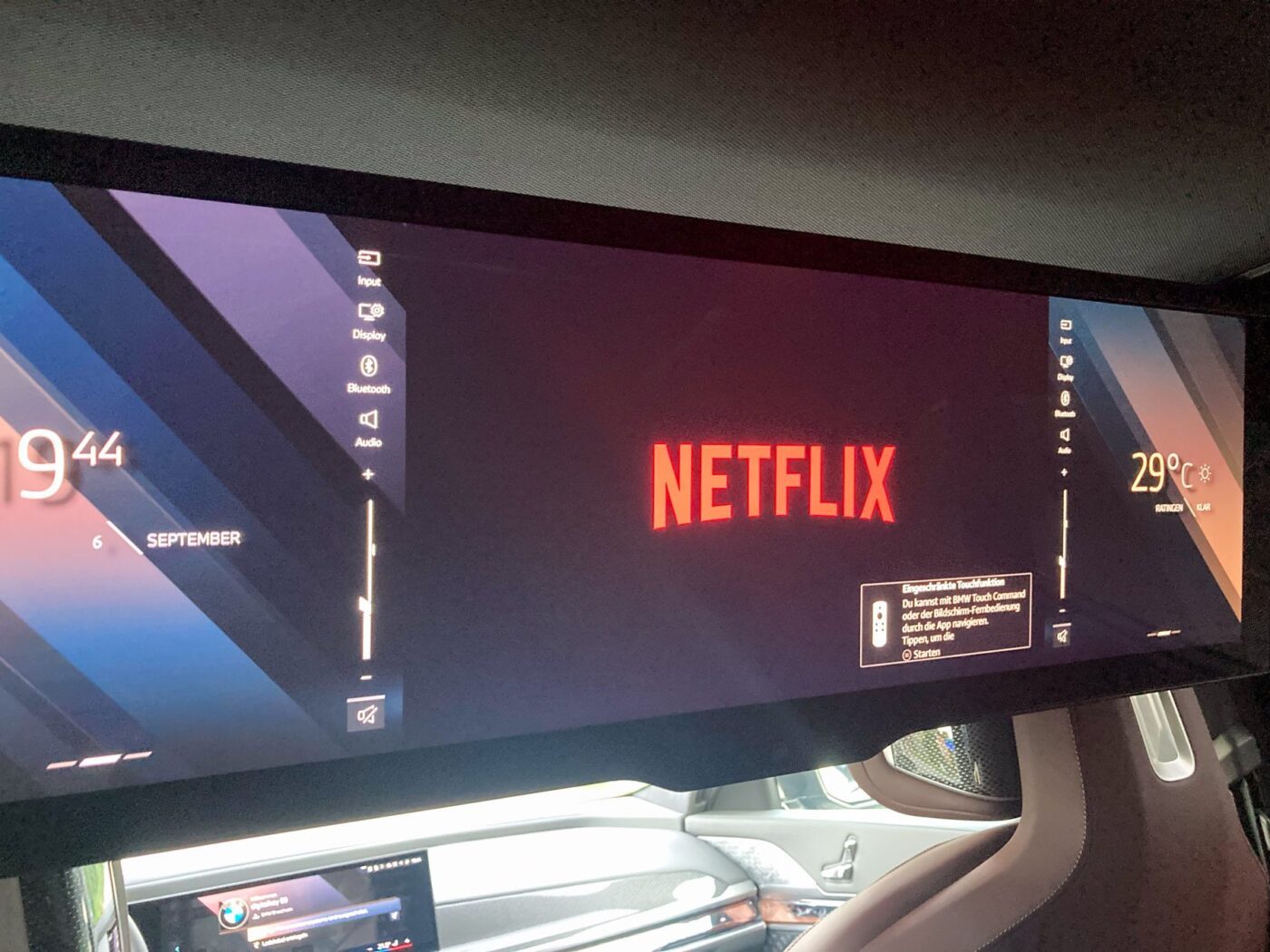
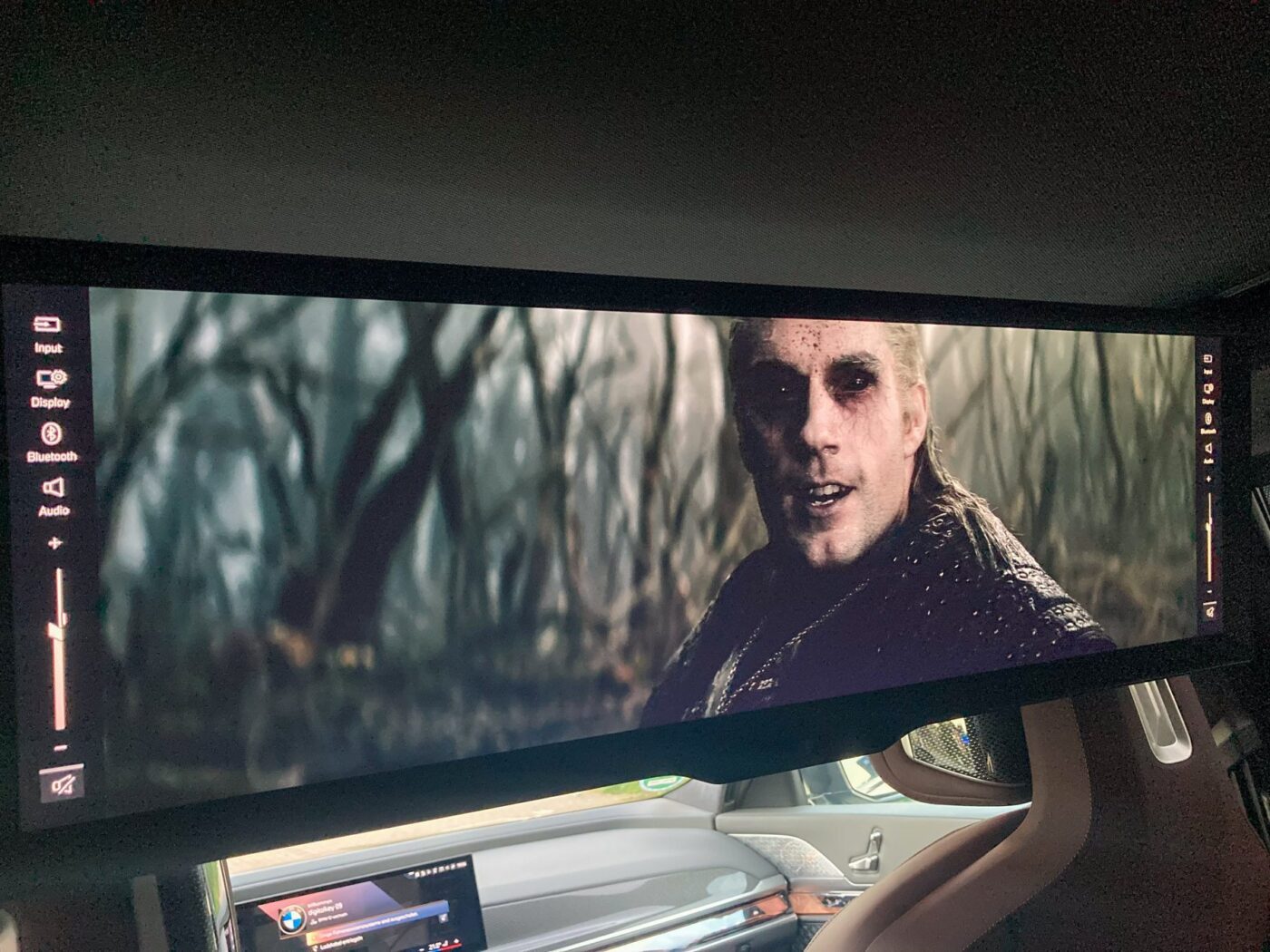
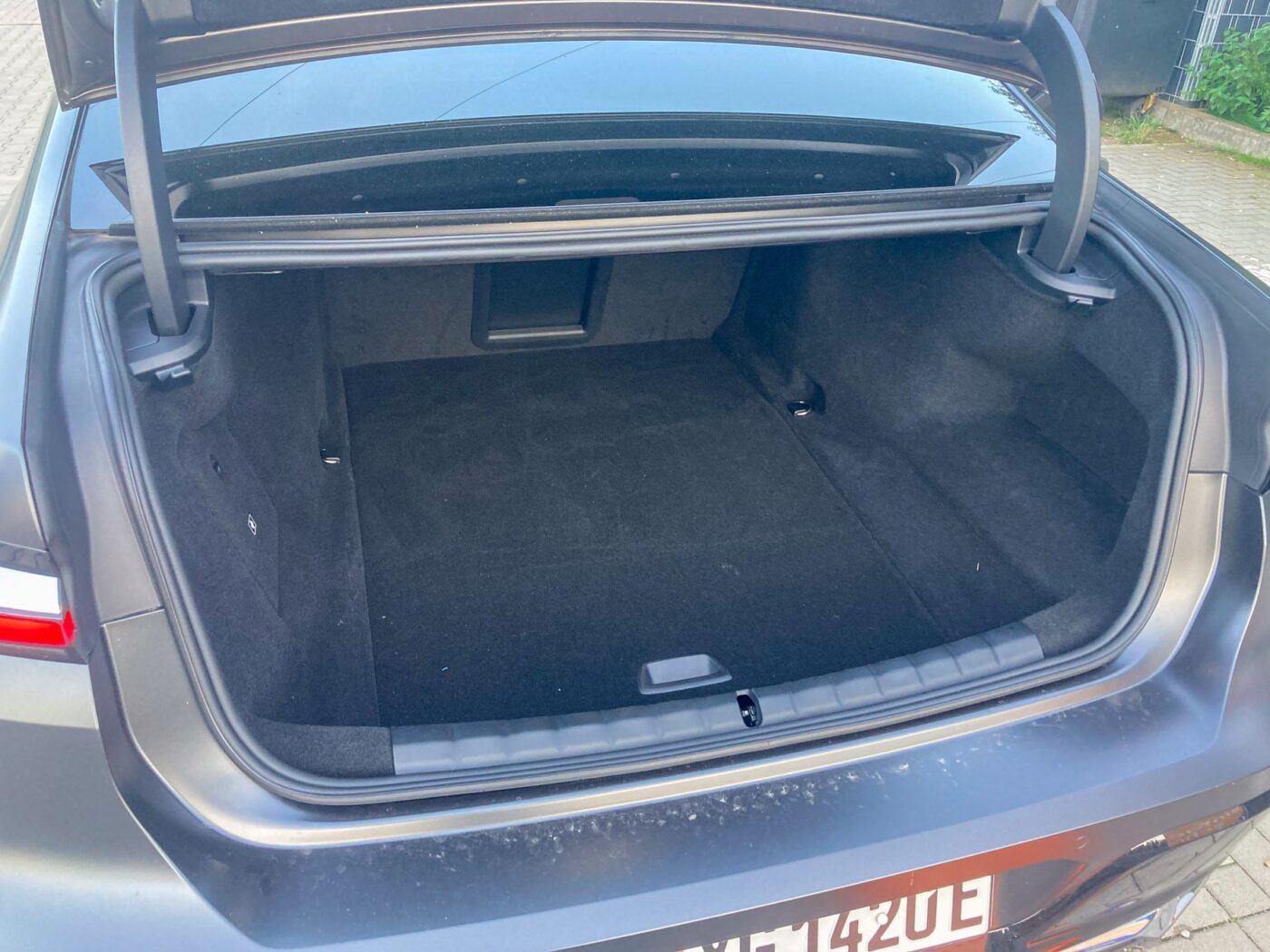
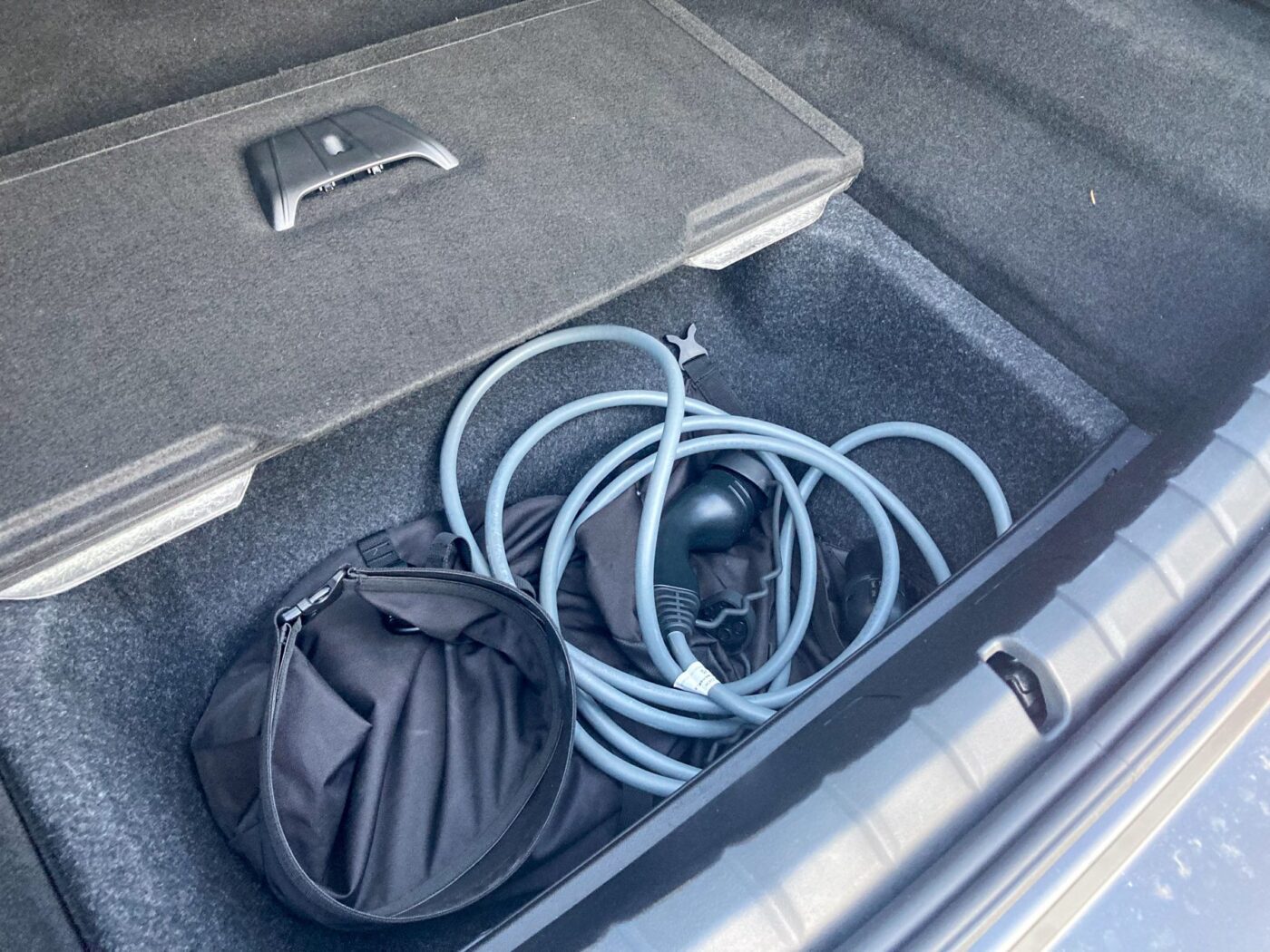
The entire infotainment system is operated via a mixture of touchscreen, buttons and the iDrive controller. In other words, anyone who has already driven a current BMW with the BMW OS8 will quickly find their way around the i7. There are a few peculiarities, such as the fact that there are no longer any buttons for the climate control, but only a touch bar (integrated into the ambient lighting) for the basic functions. The rest is operated via the touchscreen. It’s not rocket science, but it does take some getting used to without prior knowledge. Whether the more conventional touchscreen will win over Chinese customers or whether a significantly larger display would also be in demand up front, we will leave open at this point.
In contrast, the i7 leaves a very well-thought-out impression when it comes to the driving assistants. The systems, regardless of whether they intervene in the steering or the speed, are very sophisticated. That is reflected, on the one hand, in the quality of the intervention, which is usually justified and solves the driving situation well, and on the other hand in the way the system takes control (briefly). It is not sudden and unpredictable, but finely tuned and consistent – the intervention does not come as a surprise because the system has not reacted in comparable situations before. The i7 has a clear line as to when it intervenes and when it does not.
Long surcharge list is almost part of it
Even though it is a luxury sedan, you have to pay attention to the utility value for this clientele. There is plenty of space in the interior. You have to be very tall to reach the limits of head and legroom in the i7. Unlike smaller models, the combustion platform in the i7 is hardly noticeable when talking about the space inside. The i7 also has a cardan tunnel in the rear footwell, but this only becomes a problem if the middle seat is also used – as the rear seat backrests are optimized for the two outer seats, it is not particularly comfortable in the middle anyway.
The two-ton towing capacity should not go unmentioned, even if the clientele may have an SUV in the garage for towing. The trunk holds 500 litres according to the standard, the ADAC has determined 410 litres. Luggage for four adults and two weeks of vacation will be tight, but the i7 should be able to handle most transport tasks. However, the storage space cannot be extended, as the rear seat backrests with all their technology and comfort features cannot be folded down. There is an additional compartment under the trunk floor, which can be used to store charging cables, for example. It is somewhat inconvenient if the luggage has to be unloaded first in order to access the charging cable. However, there is no frunk under the long hood.
Two comments again: The i7 is a notchback sedan, so the rear window is rigid and the trunk opening is correspondingly small. A Mercedes EQS hatchback not only has a much larger trunk opening but also significantly more space with 610 to 1,770 litres (with the rear seat backrests folded down). Incidentally, in the i7 the trunk lid is not opened by a hidden button in the license plate recess, but by a button in the trunk lid itself. It attracts about the same amount of dirt as the license plate recess. And on our matt black test car, grease is transferred from the fingers to the matt paintwork (officially called ‘BMW Individual Frozen Deep Grey metallic’), which costs over 4,000 euros, every time. We can’t say at this point whether this has any long-term effects.
The 4,100 euros for the matt paint finish is just one example. With all the features we have mentioned in this driving report, you can be sure that our test car is not exactly cheap. The 21-inch rims cost around 3,750 euros more, while the ‘Executive Lounge Package’ with the theatre screen comes in at 6,730 euros. Active front seat ventilation and the massage function for the front seats are combined in the ‘Connoisseur Package’ for €2,150. The automatic doors, which open and close at the touch of a button, cost 1,500 euros. The highly praised sound system costs an extra 5,800 euros. Despite the already lavish 139,900 euro base price, our test car costs more than 180,000 euros.
Conclusion
The i7 is an overall experience. It is an experience to have driven this car or – even better – to have been chauffeured in the i7. Many of the features, from the theatre screen to the “shakers” in the seats to the ambient lighting that runs like veins through the glass roof, seem absolutely dispensable, but they contribute to the overall experience. Of course, this also applies to the drive and chassis, even if the 400 volts seem somewhat outdated for such a luxury and technology flagship as the i7. However, if BMW puts as much effort into fine-tuning the upcoming 800-volt technology of the New Class, we are optimistic about the future.
Translation by Chris Randall

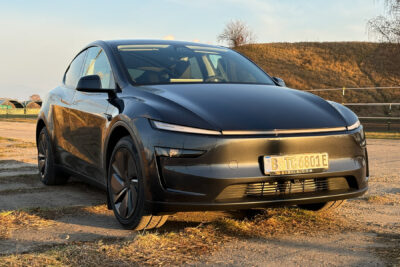
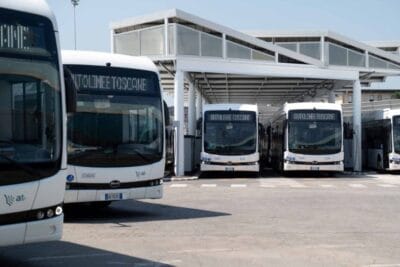
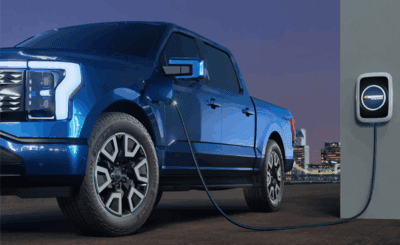
0 Comments